After our exploration of Grand Teton National Park, we headed to another of our happy places, Yellowstone National Park, also in Northwest Wyoming. For us, it’s all about the critters, so this fifth trip to Yellowstone was a delight for us.
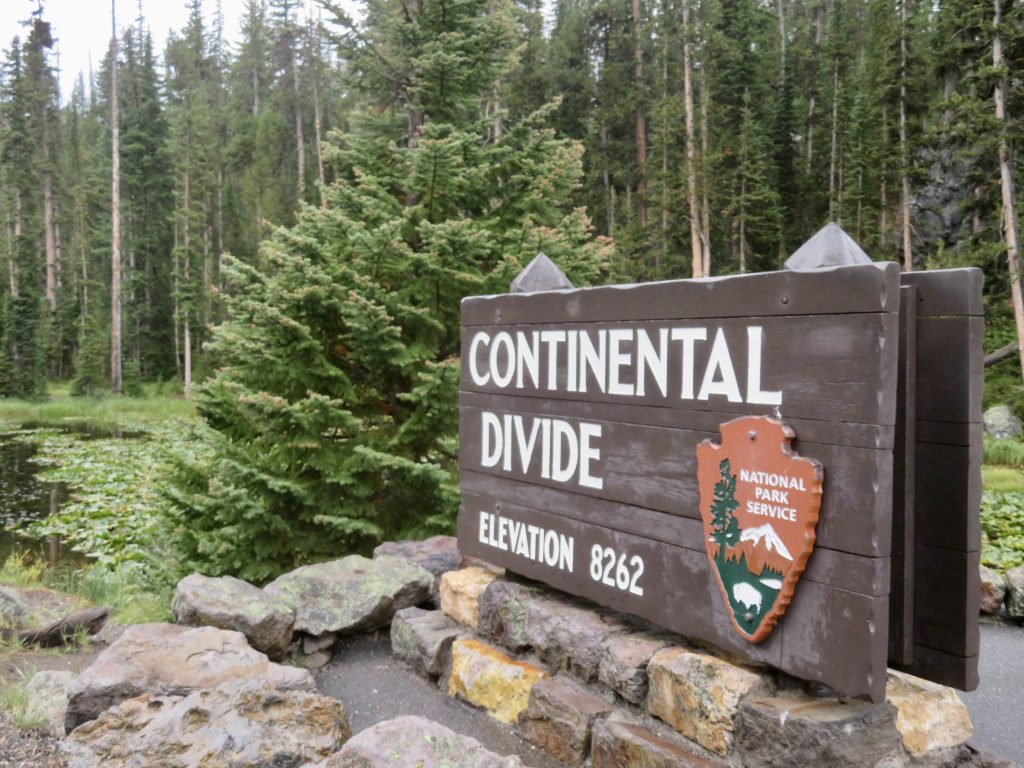
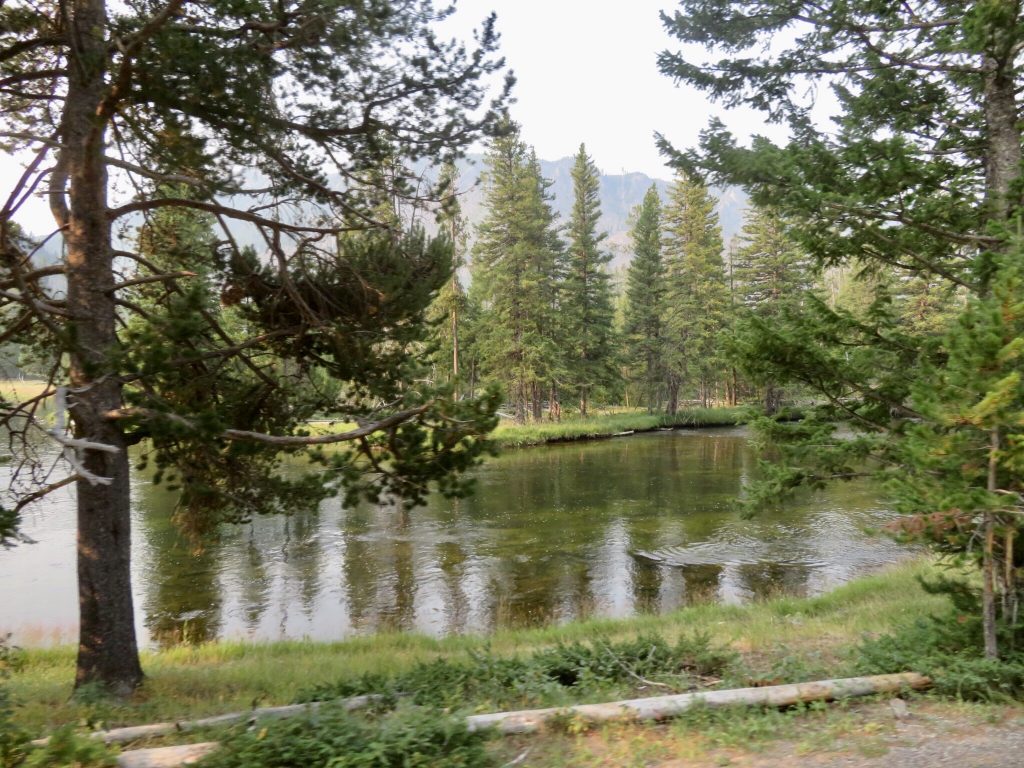
Our first four nights were in the town of West Yellowstone because I needed a strong cell signal to lead a two-day training for some mentor teachers (part of the Cotsen Foundation for the Art of Teaching). So, our activities from here were limited because I had work to do!
I had read about the formation of nearby Quake Lake, which resulted from a 1959 earthquake centered in Hebgen Lake just northwest of Yellowstone. After picking up takeout from Firehole BBQ (yum!) in West Yellowstone, we took the 30-minute drive to the Quake Lake Visitor Center (National Forest), where we viewed a very informative video about the 7.5 earthquake that rocked the area in the middle of the night, destroying roads and erupting geysers in Yellowstone and sending an avalanche of rock and dirt down the side of a mountain, killing about 2 dozen people who were camping nearby.
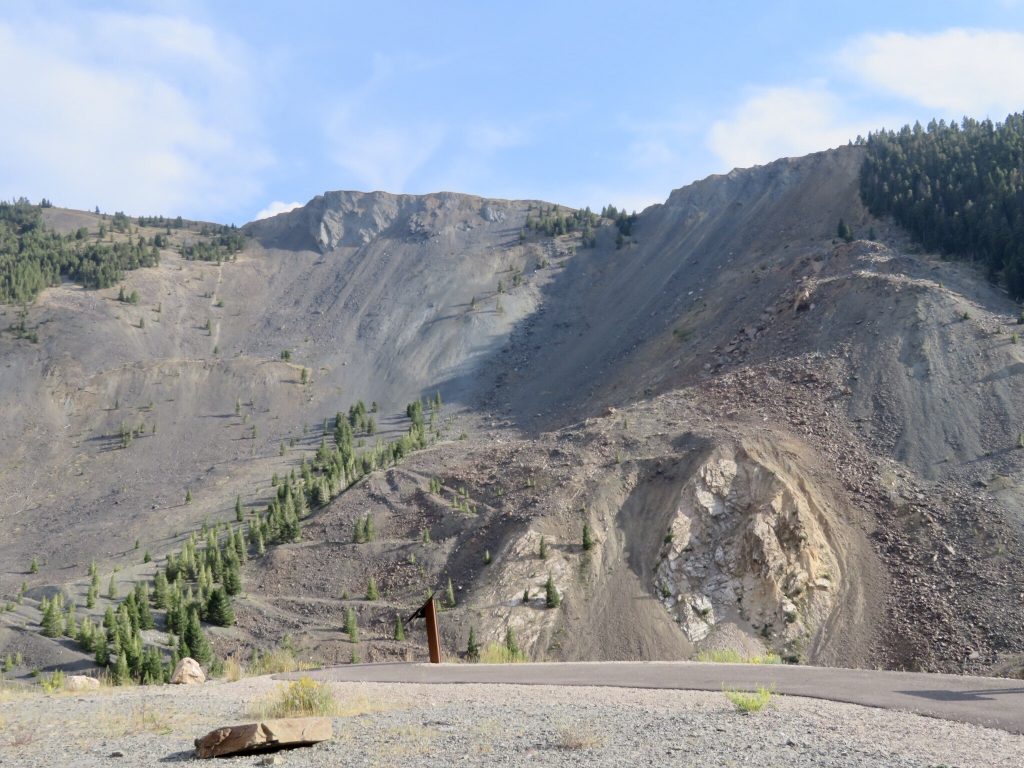
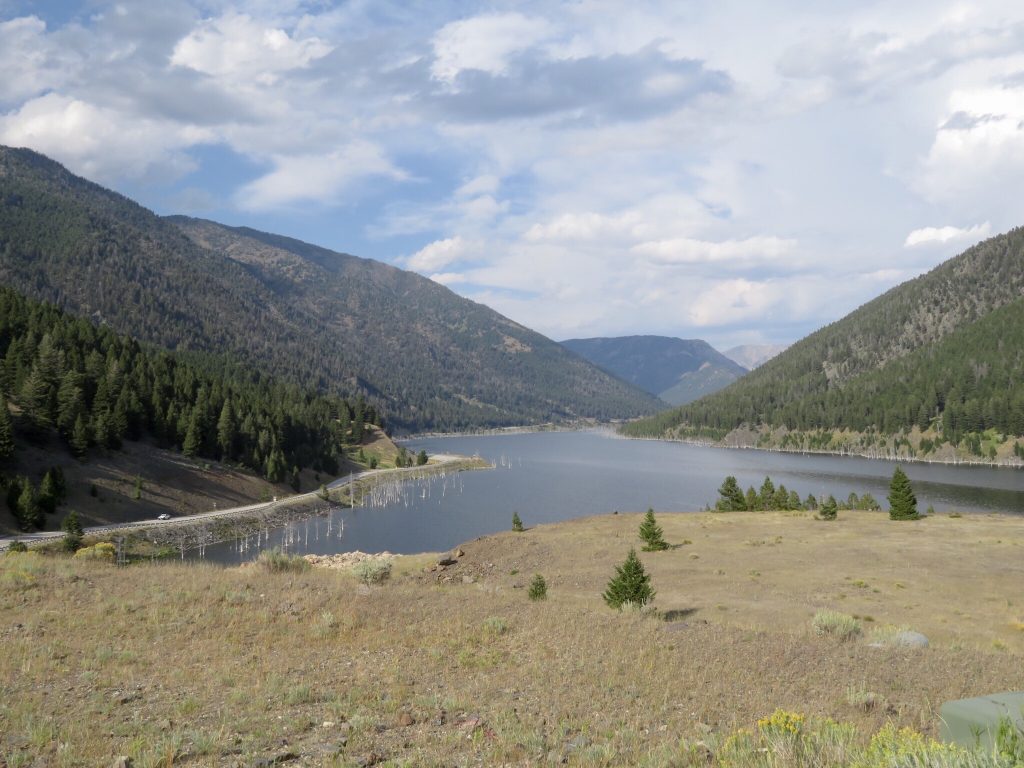
Quake Lake was formed when the avalanche created a natural dam on the Madison River. A short time later, the engineers constructed a spillway to allow the river to flow again. They didn’t want a repeat of the flood in Kelly, WY, that killed several people after a rock slide formed Lower Slide Lake and the natural dam broke two years later (see our recent post on Grand Teton National Park for more details).
As we toured various thermal features around Yellowstone last week, we were struck by the number of thermals that changed patterns following this massive earthquake in 1959. Some geysers stopped erupting, some started, some changed their frequency, and all because of an earthquake many miles away and its ripple effects.
After my training was completed, we headed out to Monument Geyser Basin for a short, steep hike on the road between Madison and Norris Geyser Basin. The hike follows the Gibbon River and then heads up to a small thermal area where Monument Geyser used to erupt and now there are just a few fumaroles (steam vents).
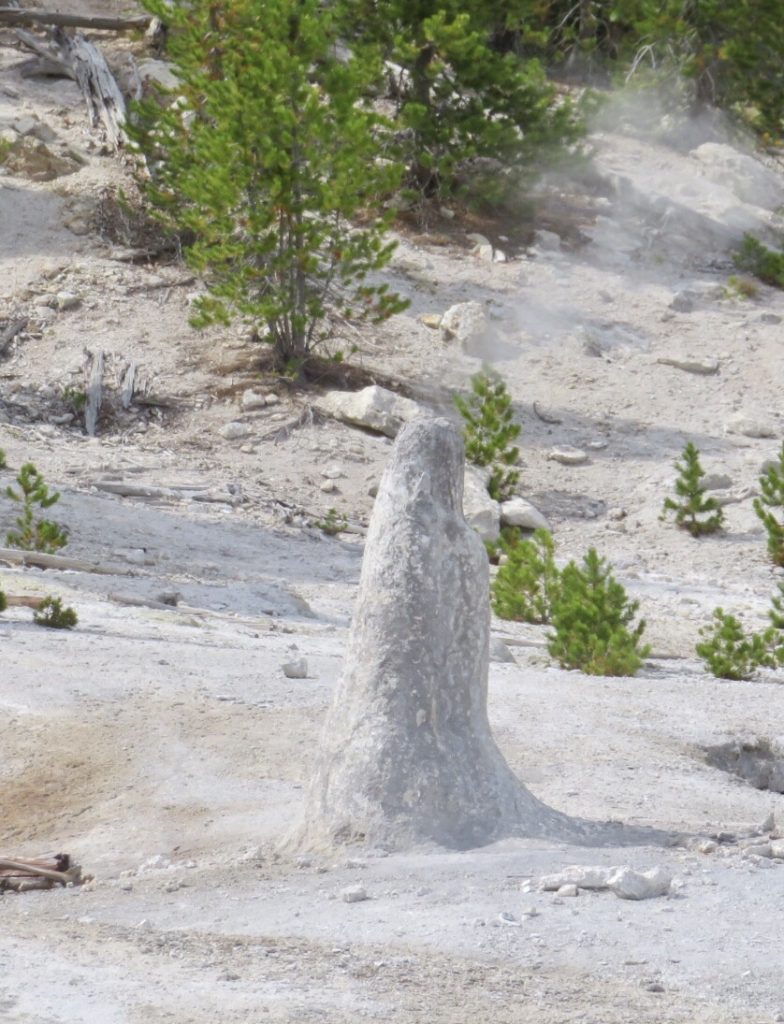
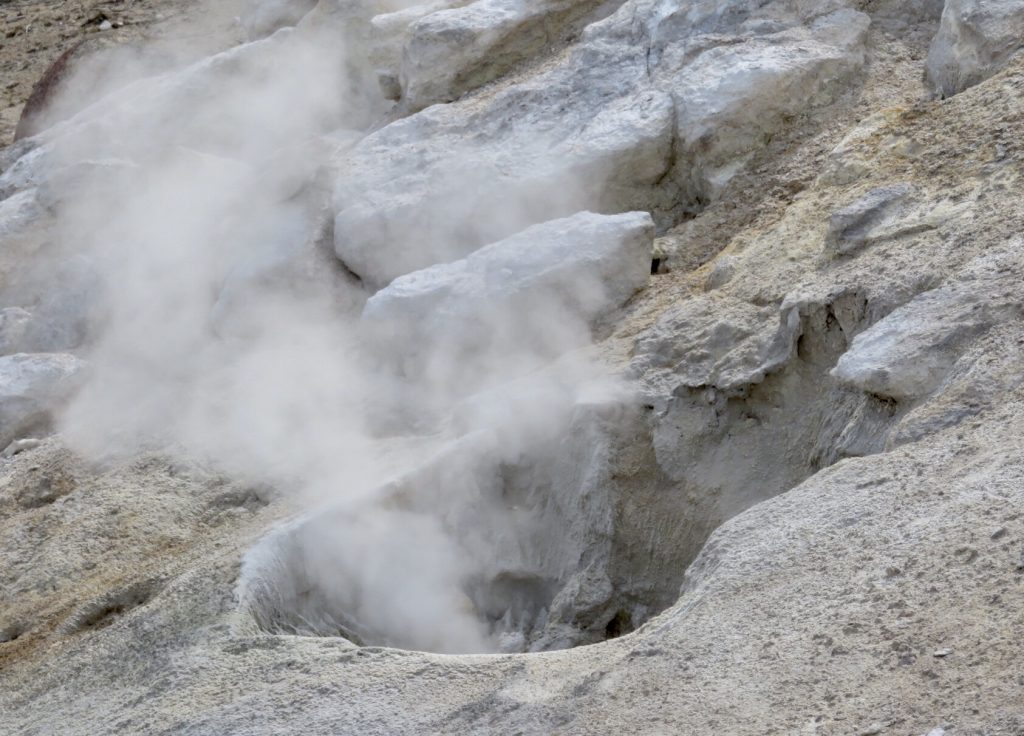
This hike does offer beautiful views of the Gibbon River valley and surrounding mountains, but don’t do it on a hot day! That was our main challenge.
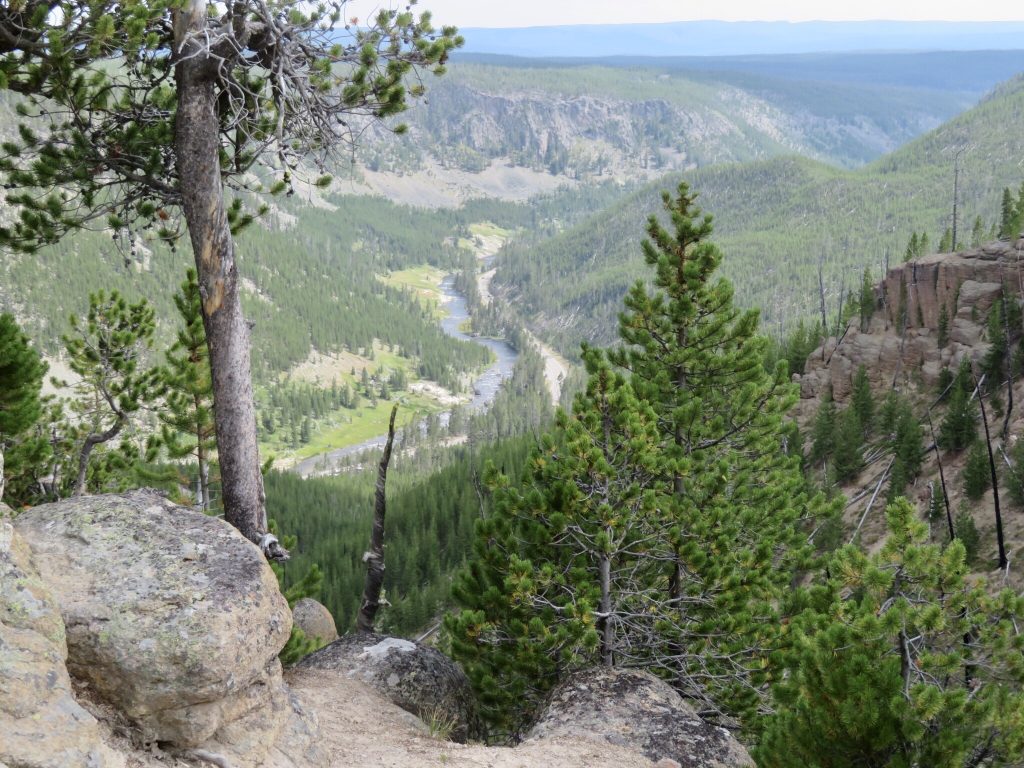
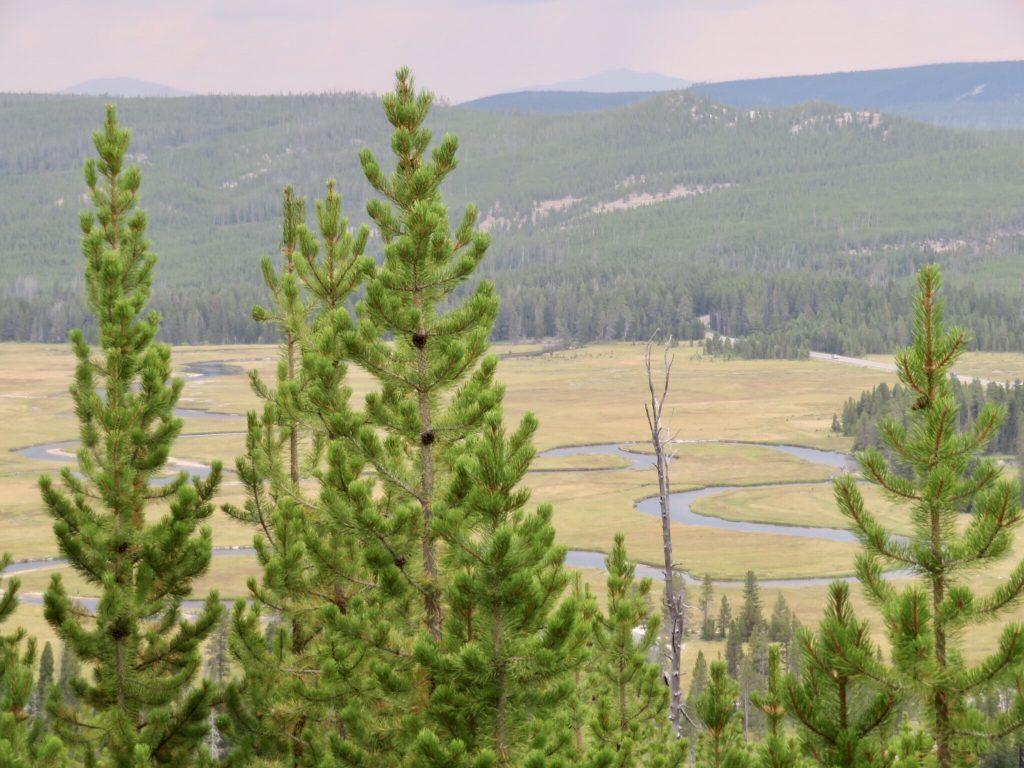
The Lamar Valley has become one of our required stops in Yellowstone, mainly because of the wolves. Because of road repairs and campground closures this year in the age of COVID-19, our shortest route to Lamar Valley was 80 miles from West Yellowstone. We headed out at 6:00 a.m. in search of these elusive canines. Sandhill cranes and a coyote were our first sightings of the morning.
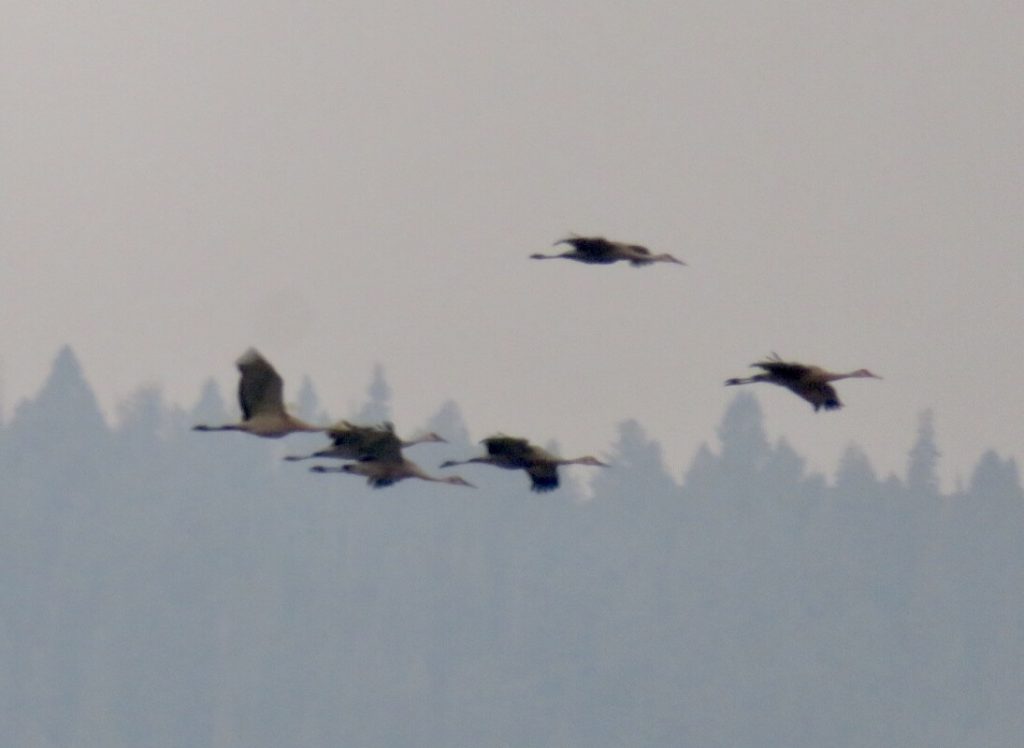
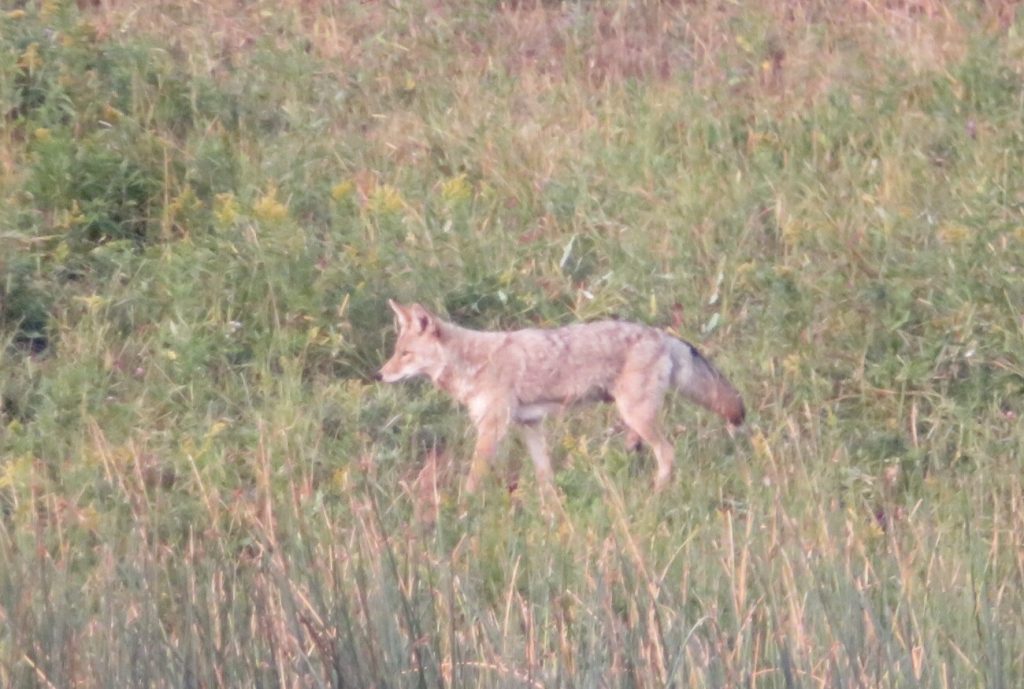
We knew we were in for a treat when we saw all the cars pulled over and people out with spotting scopes and binoculars. Sure enough, there had been a bison kill near the road between Tower Junction and Lamar Valley, and two wolves were just finishing their meal as we set up our viewing station. We never get great photos of wolves—our camera just isn’t that good and they’re pretty far away—but it’s always fantastic to see these wild ones!
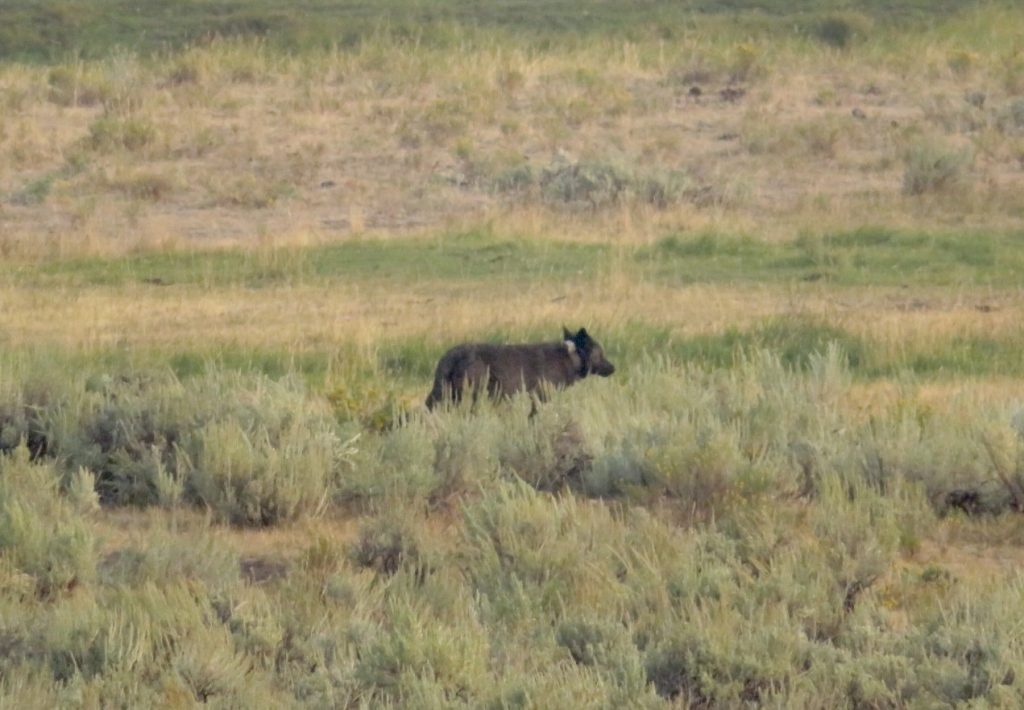
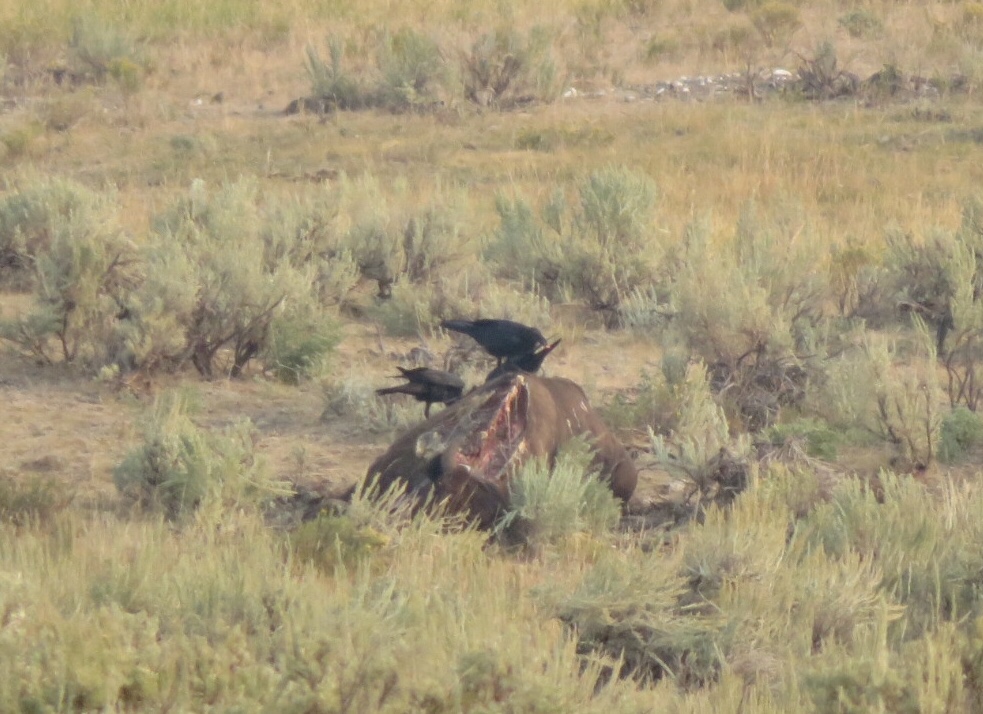
No trip to Yellowstone would be complete without bison, including the ubiquitous bison jams, where all traffic stops because bison are literally walking on the road. Bison were all over Lamar Valley because August is the bison rut, so the males were feeling frisky.
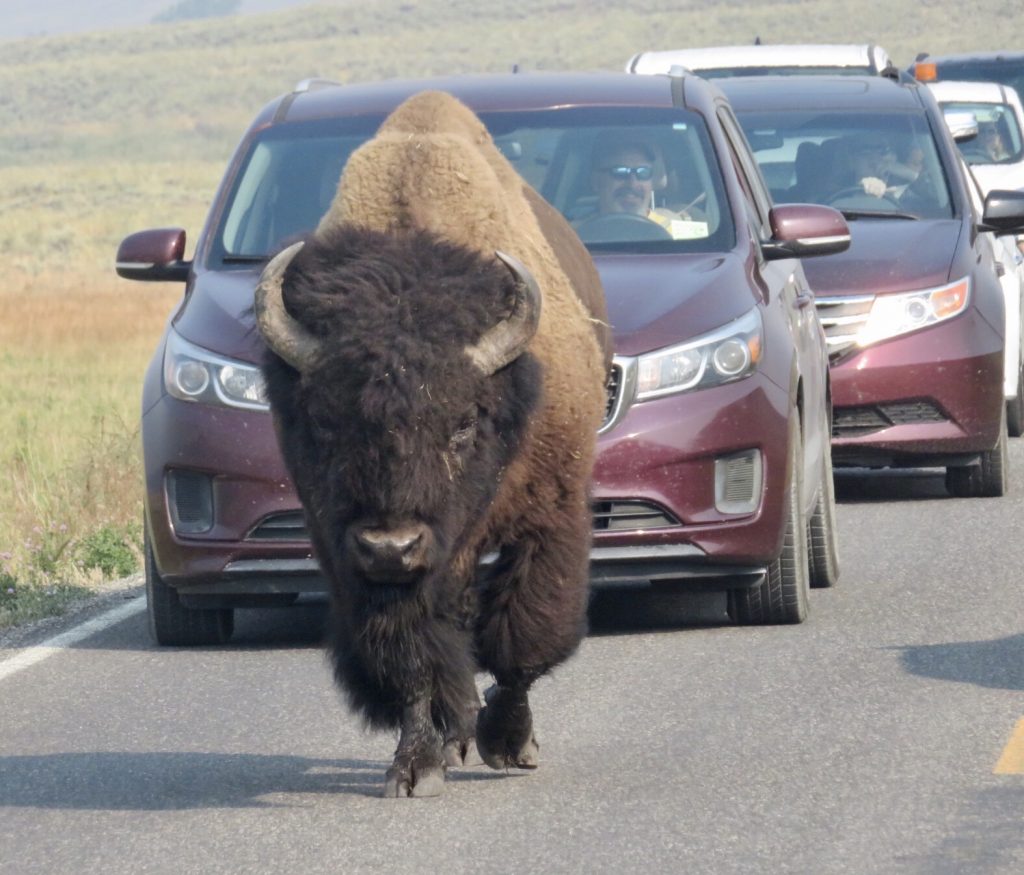
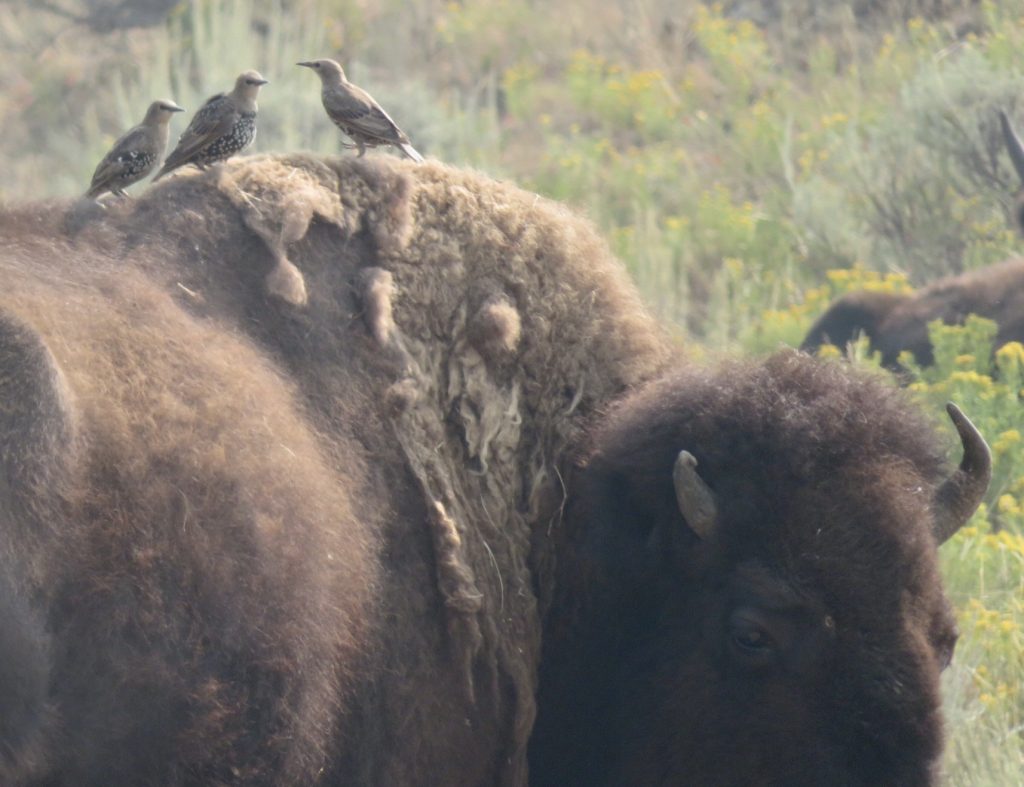
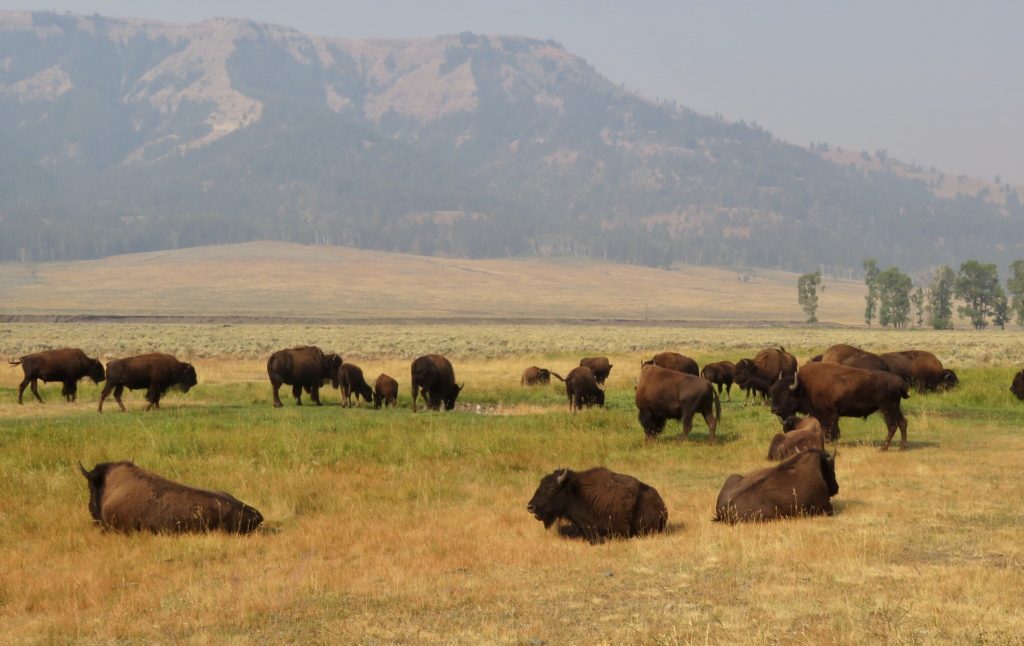
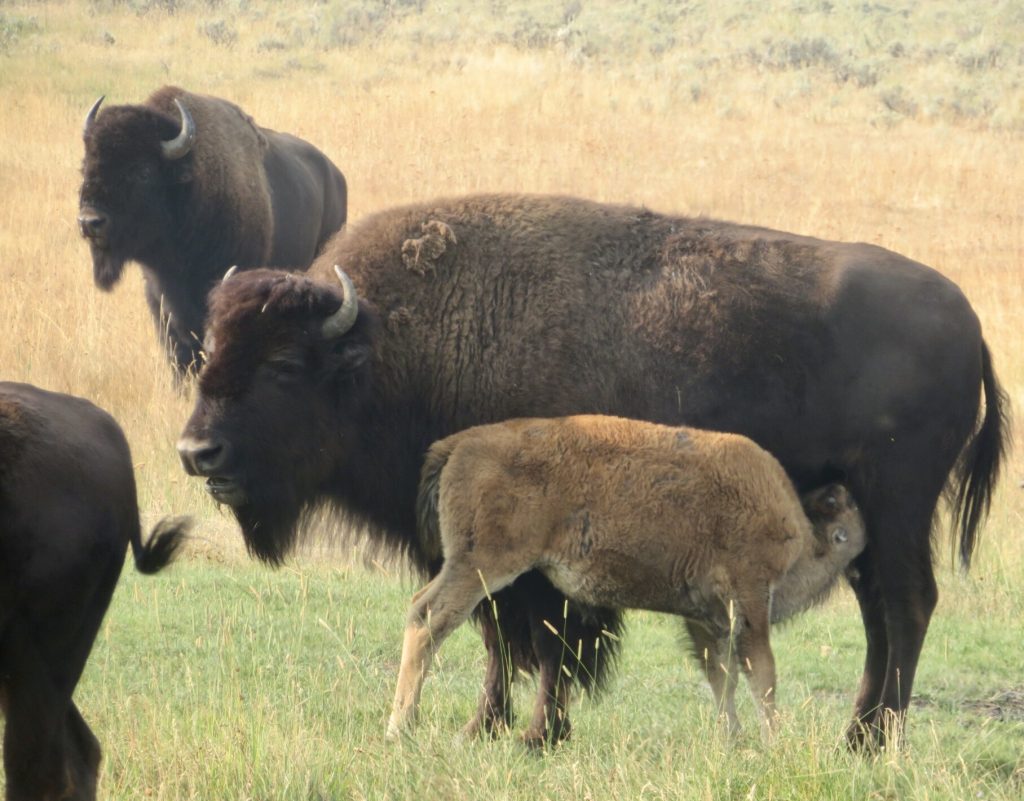
An osprey nest along the road was another wonderful sight. Plus, additional pronghorn crossed our path (not just in Grand Teton NP).
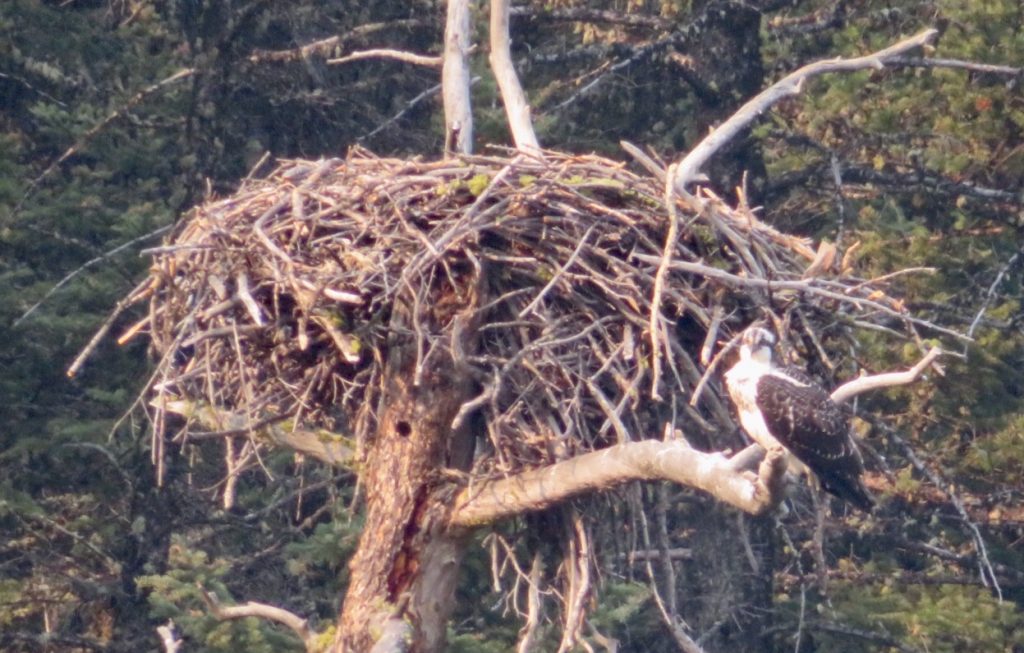
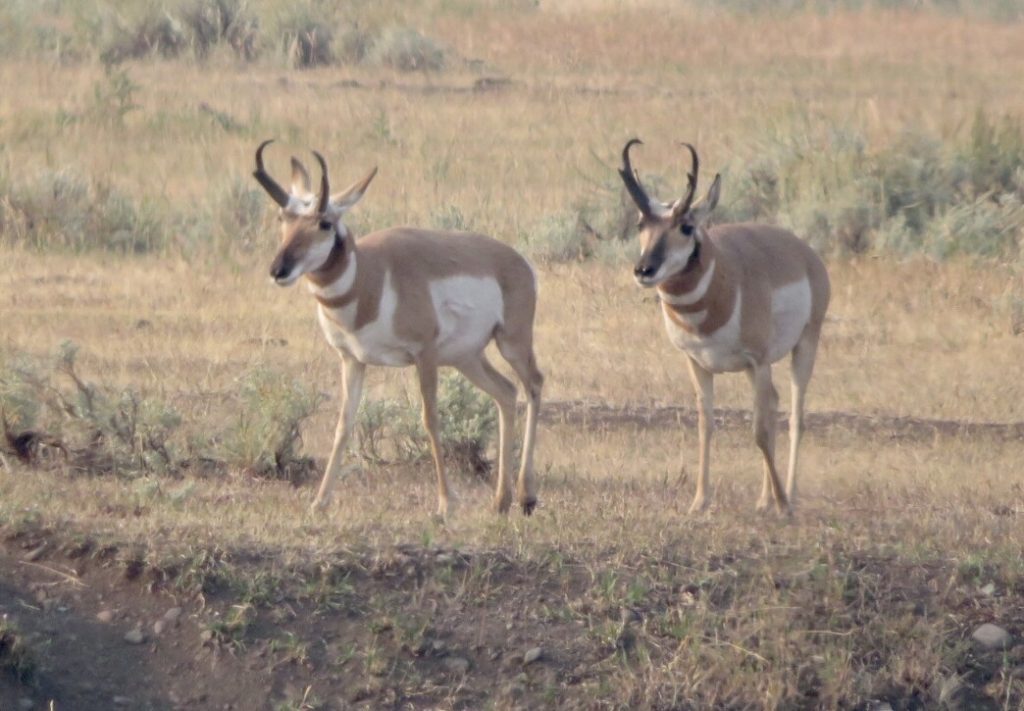
Around lunchtime we drove the Blacktail Plateau Drive, a gravel-pot-holed road that parallels the main road between Mammoth and Tower and supposedly is good for wildlife spotting (though we haven’t had much success). When we stopped for a picnic lunch along the way, we were greeted by two Canada Jays, anxious to snag any lunch droppings.
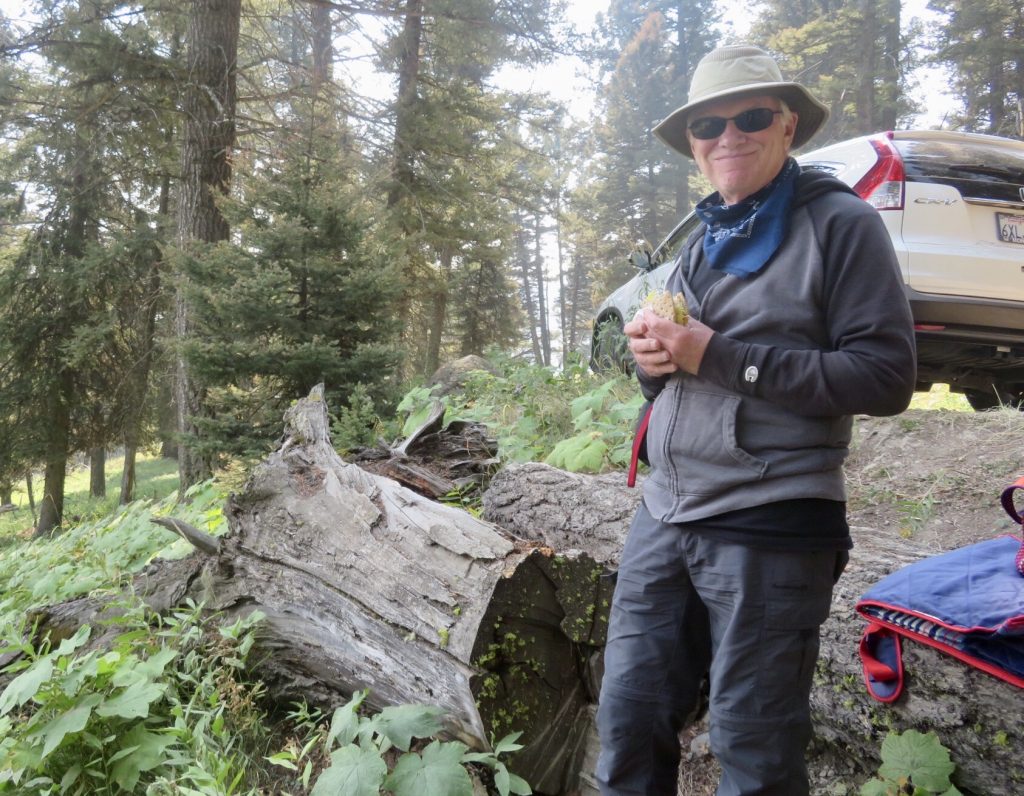
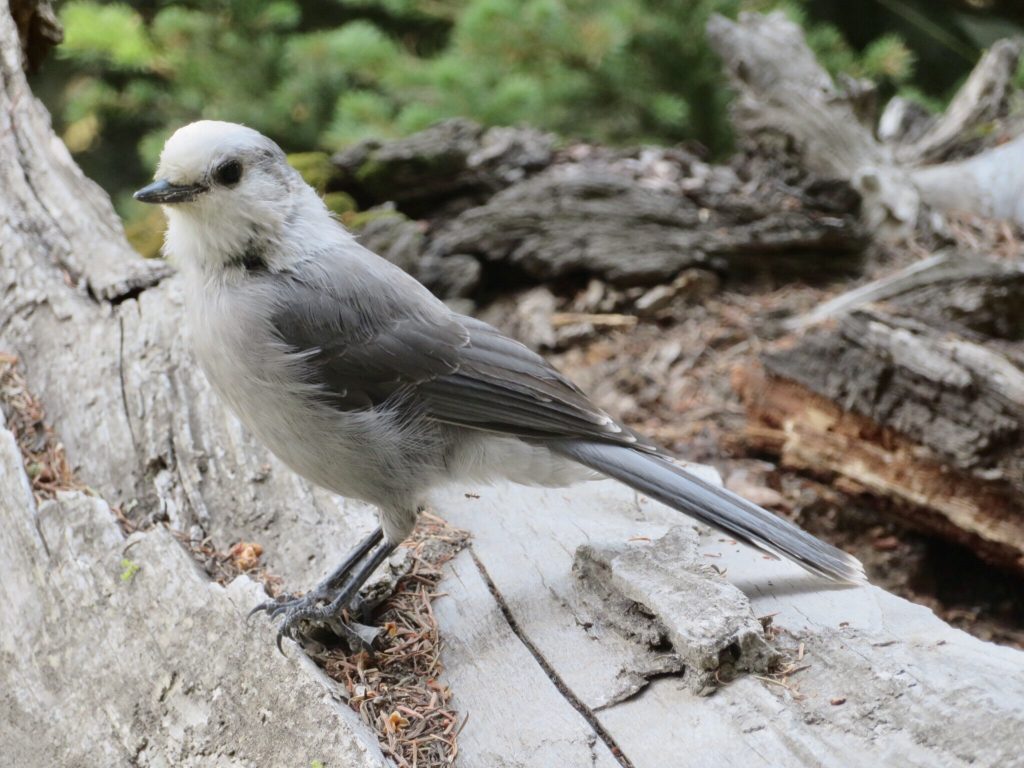
We skipped some of the more popular north Yellowstone hotspots because there were too many people and because we’ve done so many of these things before. But a quick drive through the Upper Terrace of Mammoth Hot Springs reminded us of why we find Yellowstone so fascinating.
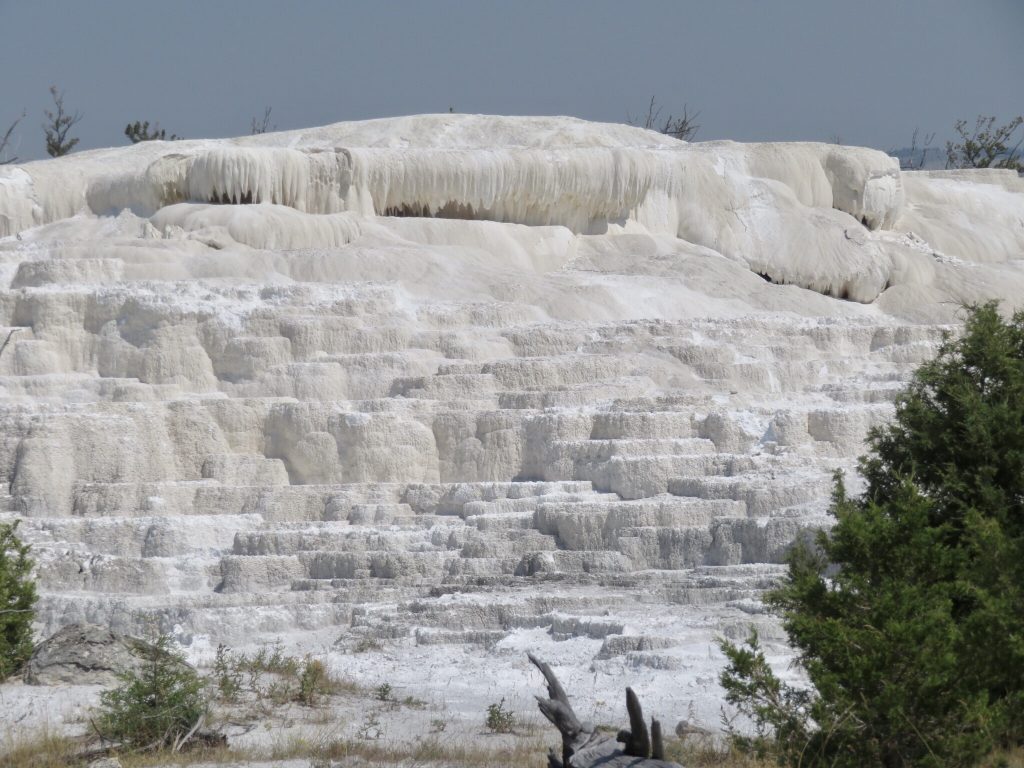
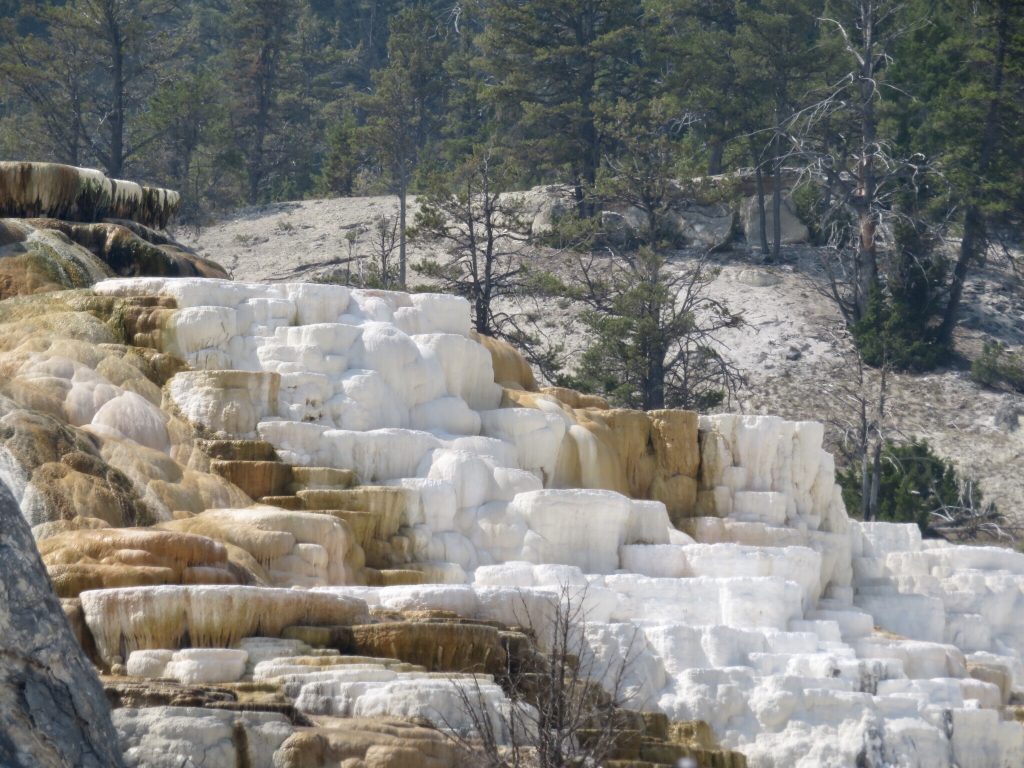
Trumpeter swans floated on Swan Lake (what a surprise!) as we headed back toward Norris. And a small hot spring area called Thermal Spring was a refreshing stop before we headed back to West Yellowstone.
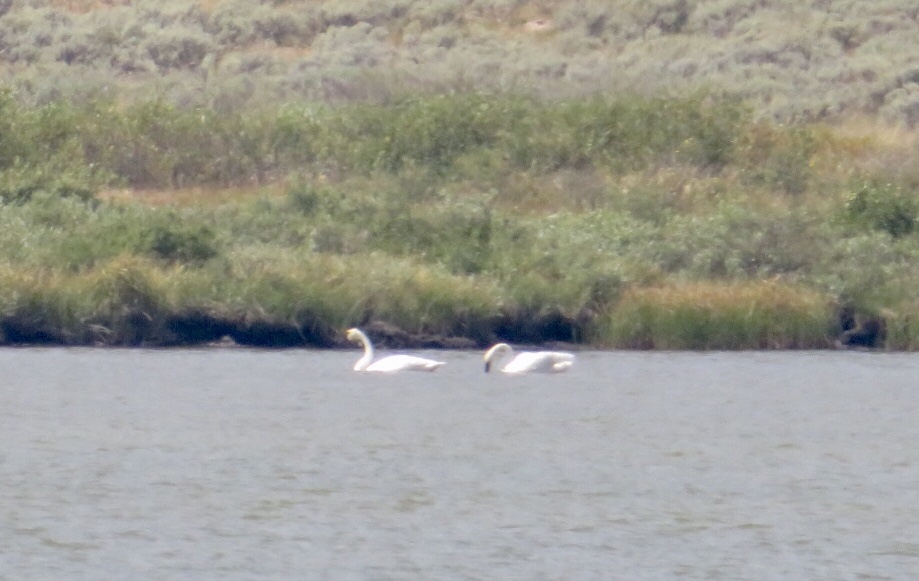
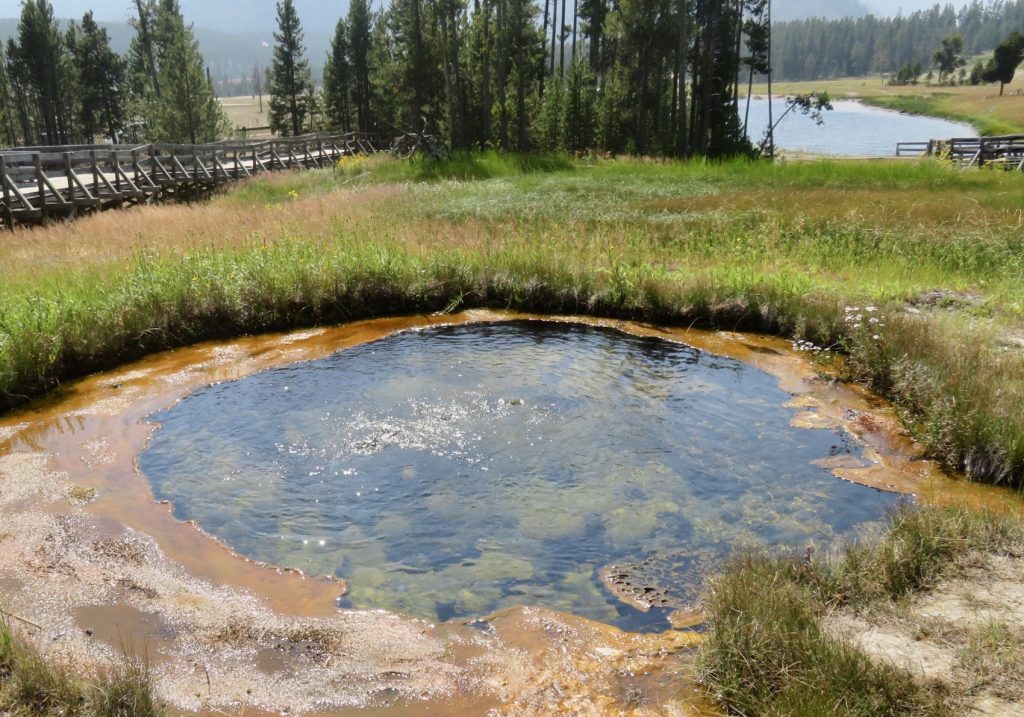
For our next two days we were based out of Bridge Bay Campground on Yellowstone Lake. The morning drive to get to Bridge Bay was gorgeous, following the Madison River and Firehole River, then driving by the main geyser basins in the park, up and over Craig Pass and the Continental Divide (we didn’t stop because our plan was to come back in the car later in the week).
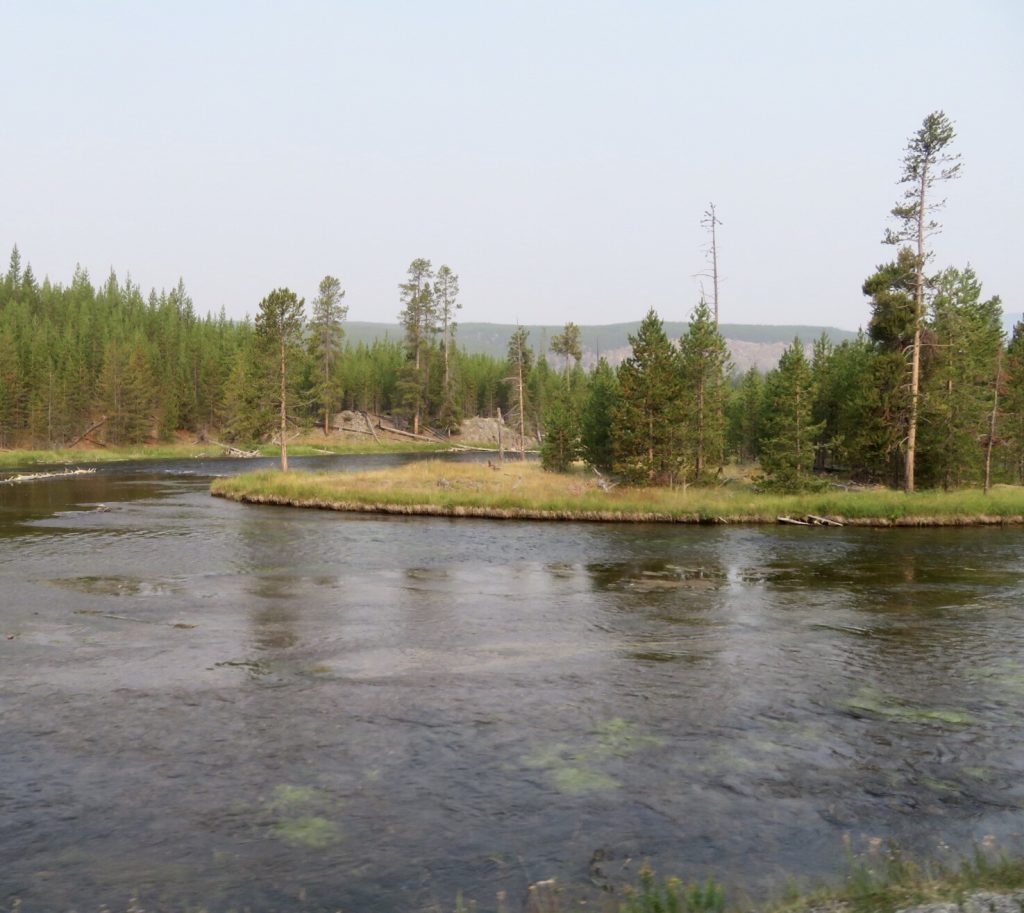
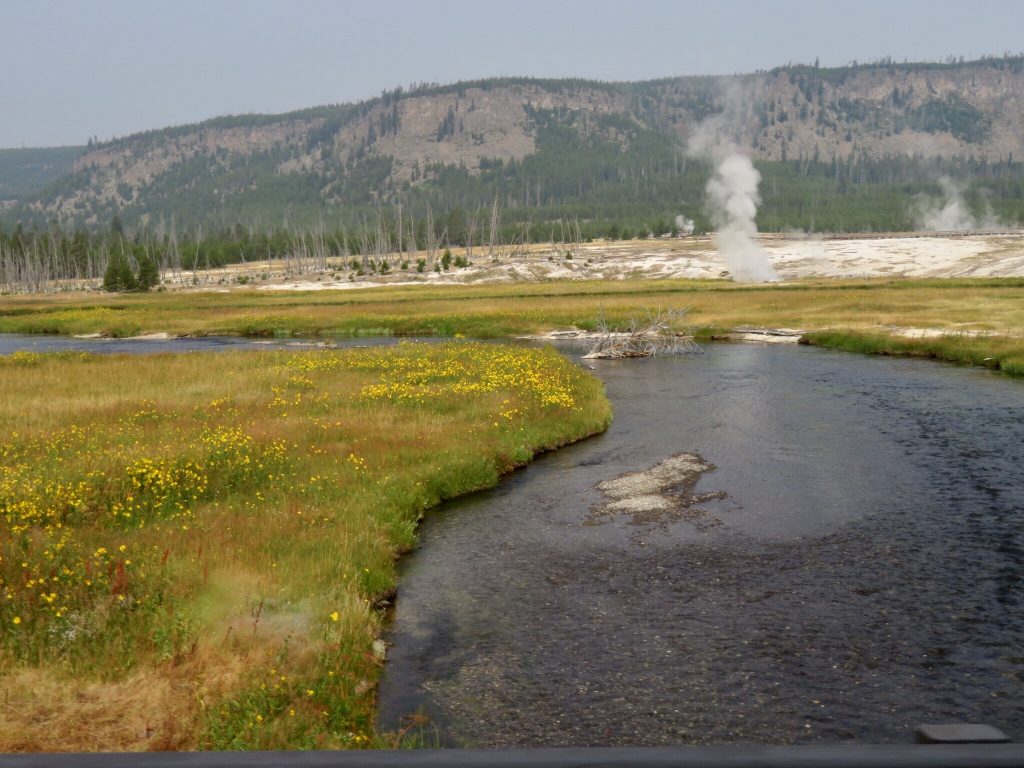
We didn’t love Bridge Bay Campground (really exposed campsites too close together), but we LOVED the male elk who call this campground their home. From the second we pulled up until the morning we left, we saw these elk graze through the campground, and we even got to see two males sparring for at least 30 minutes (complete with sound effects). So fun to watch and neither seemed to sustain any injuries.
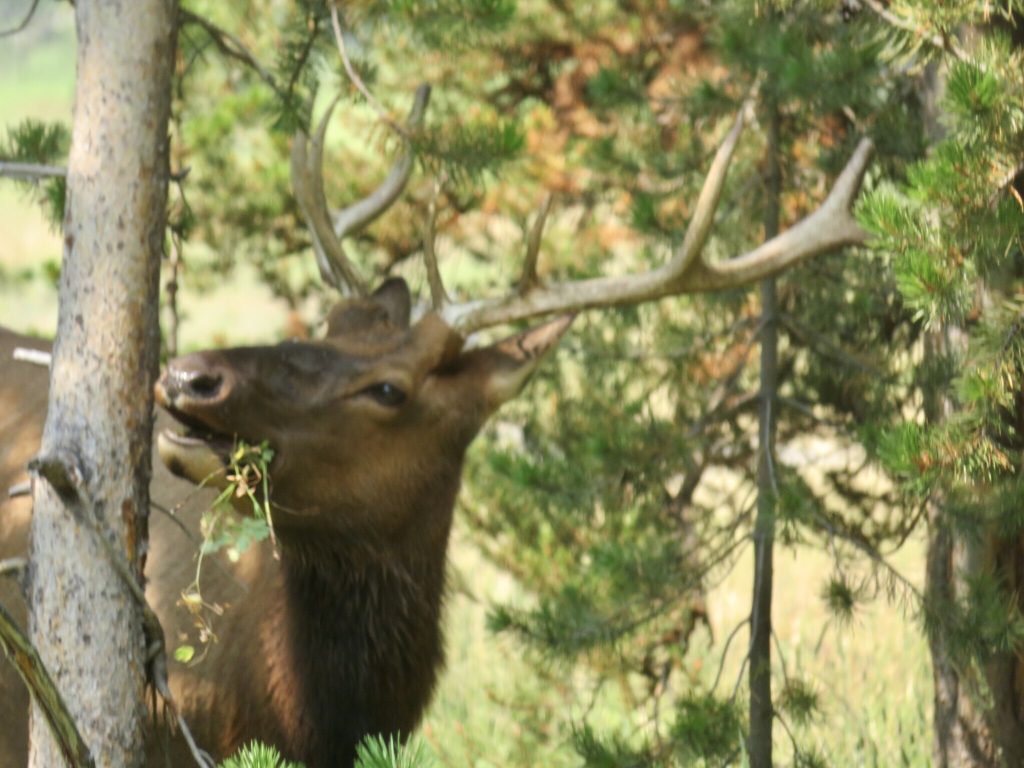
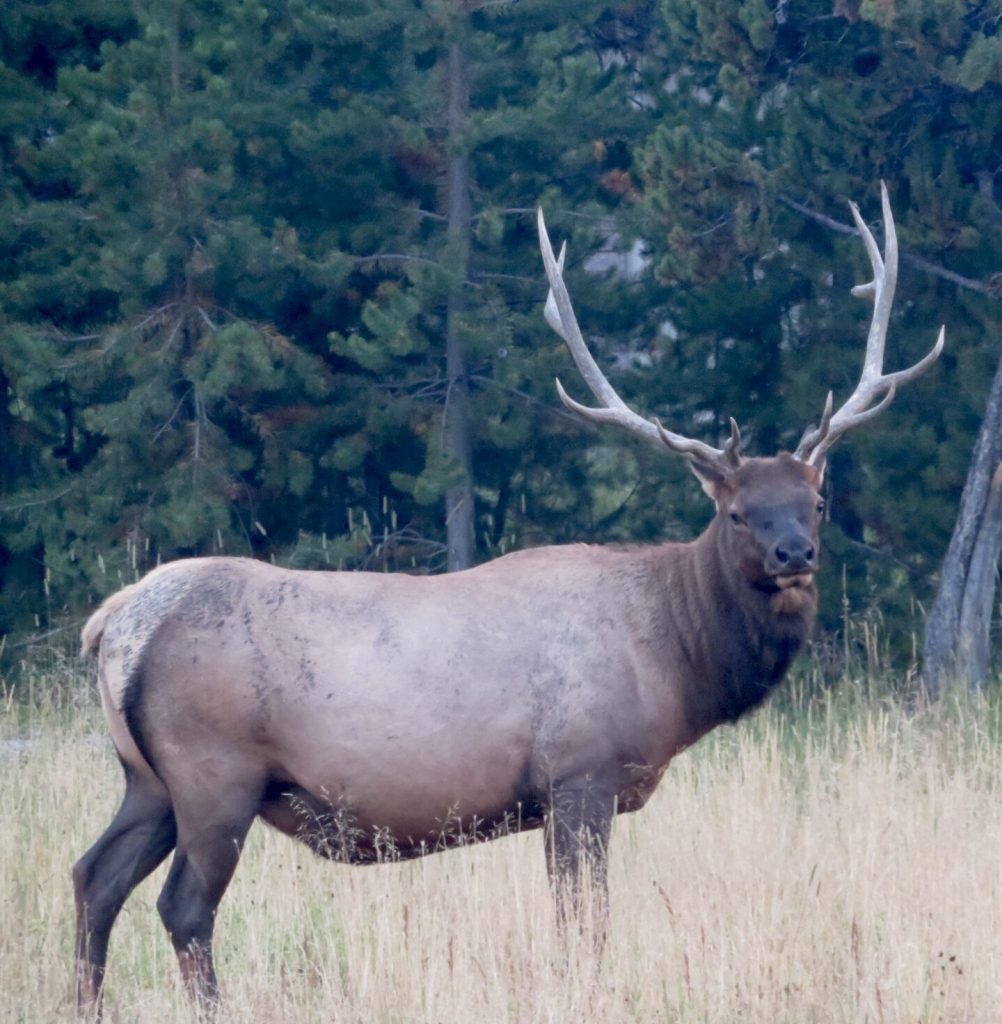
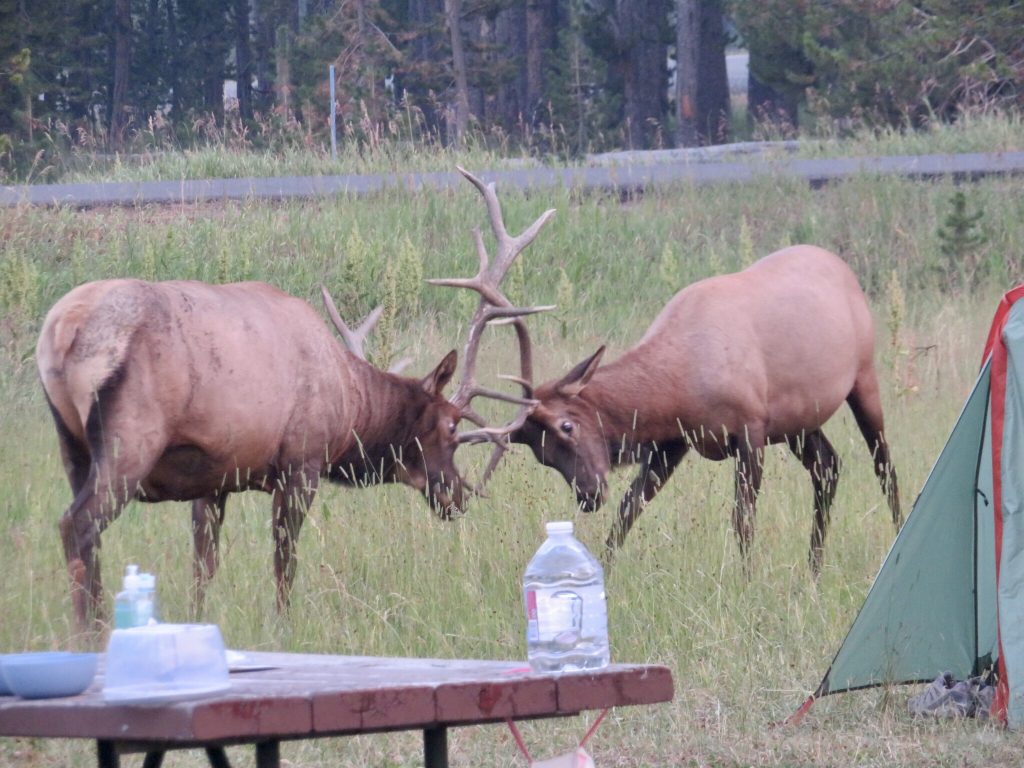
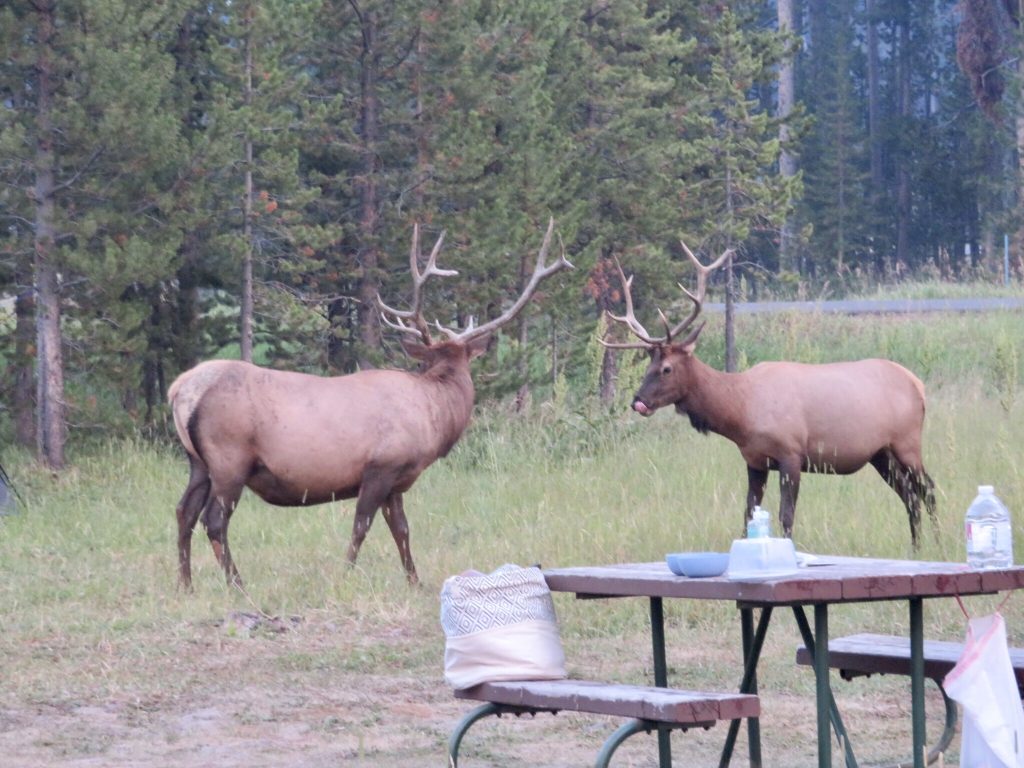
From Bridge Bay it was a short drive to the Lake Village area, where we stopped briefly to view the iconic Yellowstone Hotel with its resident bison in front. It was also a short distance to our first Yellowstone bike ride—to Natural Bridge and then down Gull Point Drive, along Yellowstone Lake.
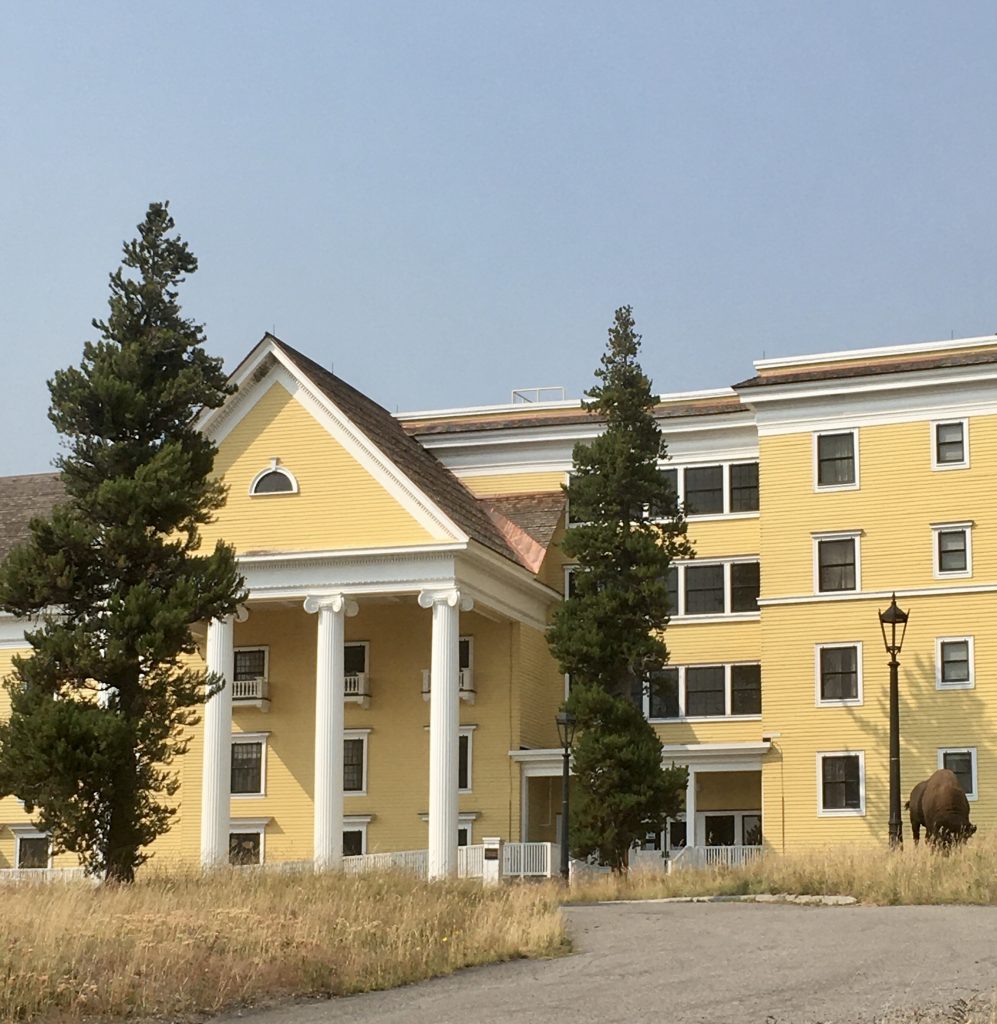
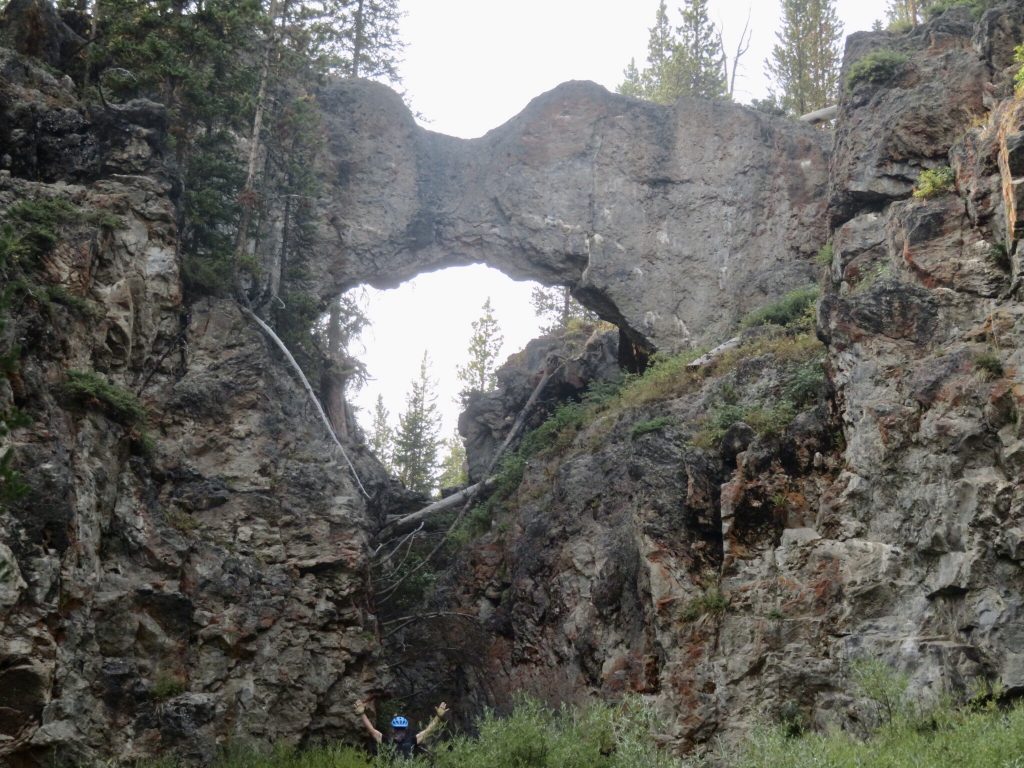
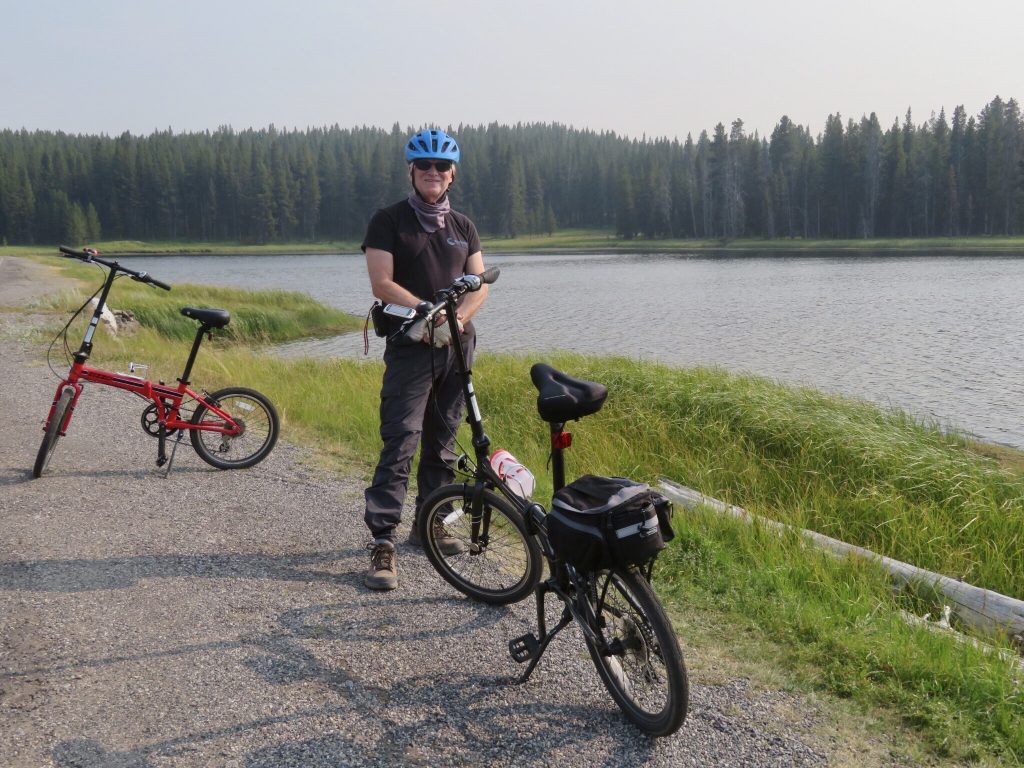
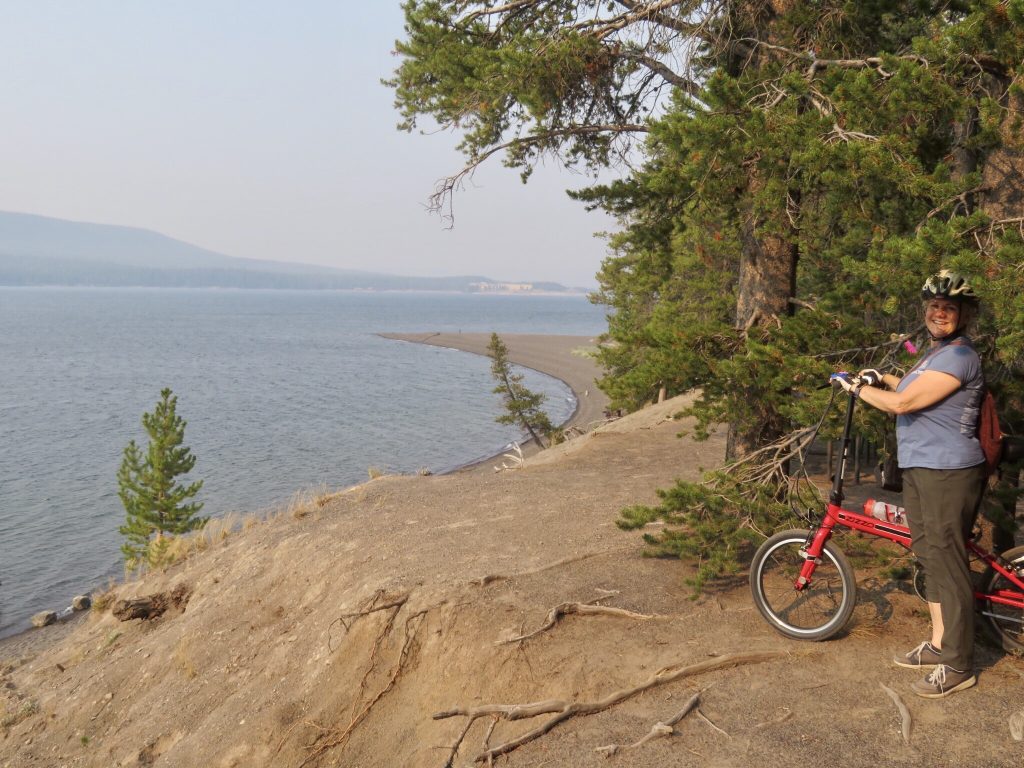
The other good thing about Bridge Bay is its proximity to the Hayden Valley, another hotspot for wildlife. Apparently, the male bison often live in Bridge Bay Campground, along with the male elk, but the bison were all up in Hayden Valley for the rut, so it was a lively drive one morning.
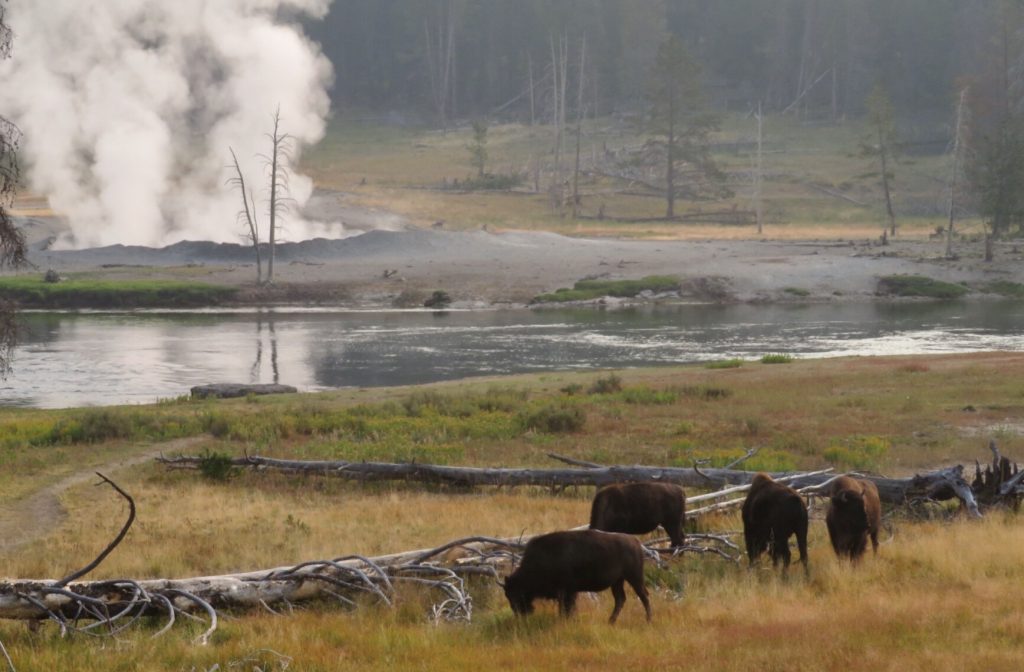
One highlight was seeing a very newborn bison calf and its mother cross the road and feed on the grass. We know this calf was just born because its mother was still trailing signs of afterbirth, disgusting but informative.
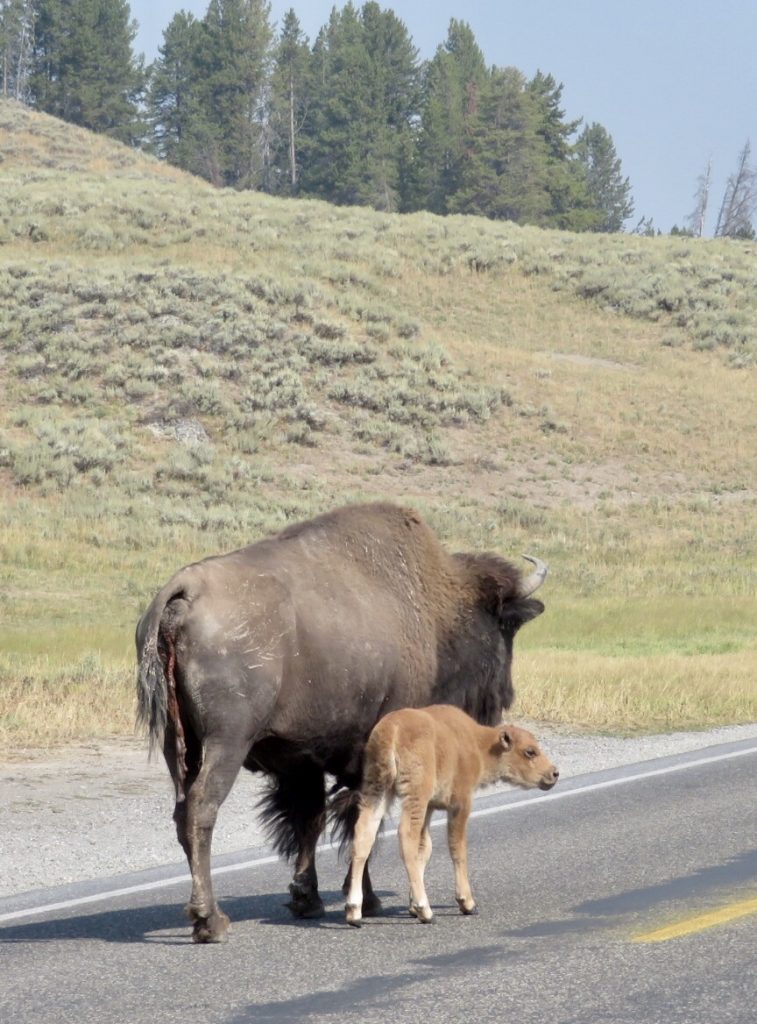
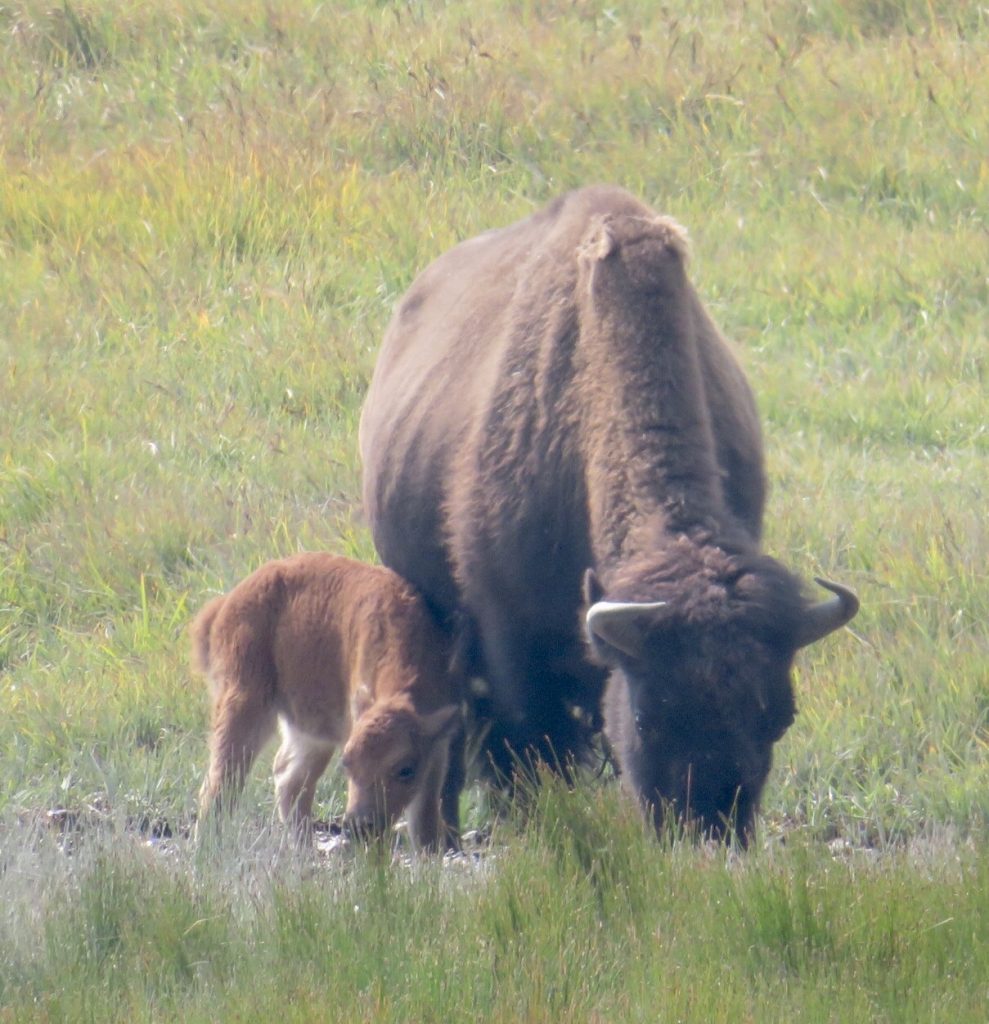
More trumpeter swans floated by us on the Yellowstone River, and more sandhill cranes appeared between Canyon and Norris. We spotted a beautiful white pelican with a broken wing at Fishing Bridge.
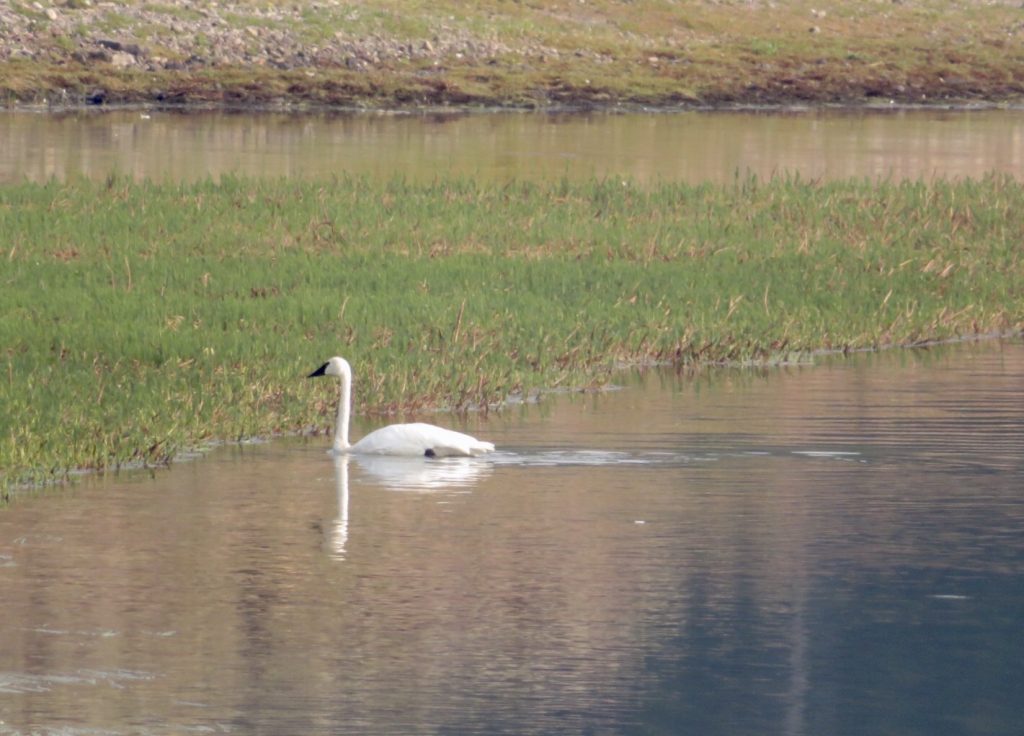
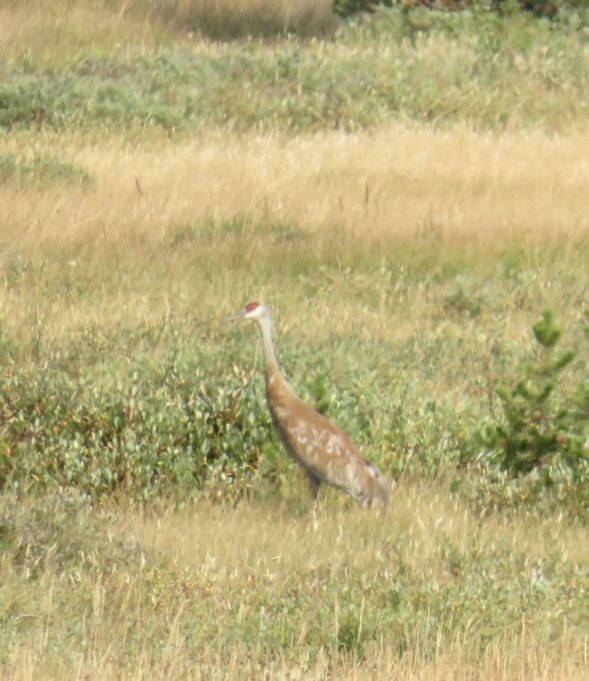
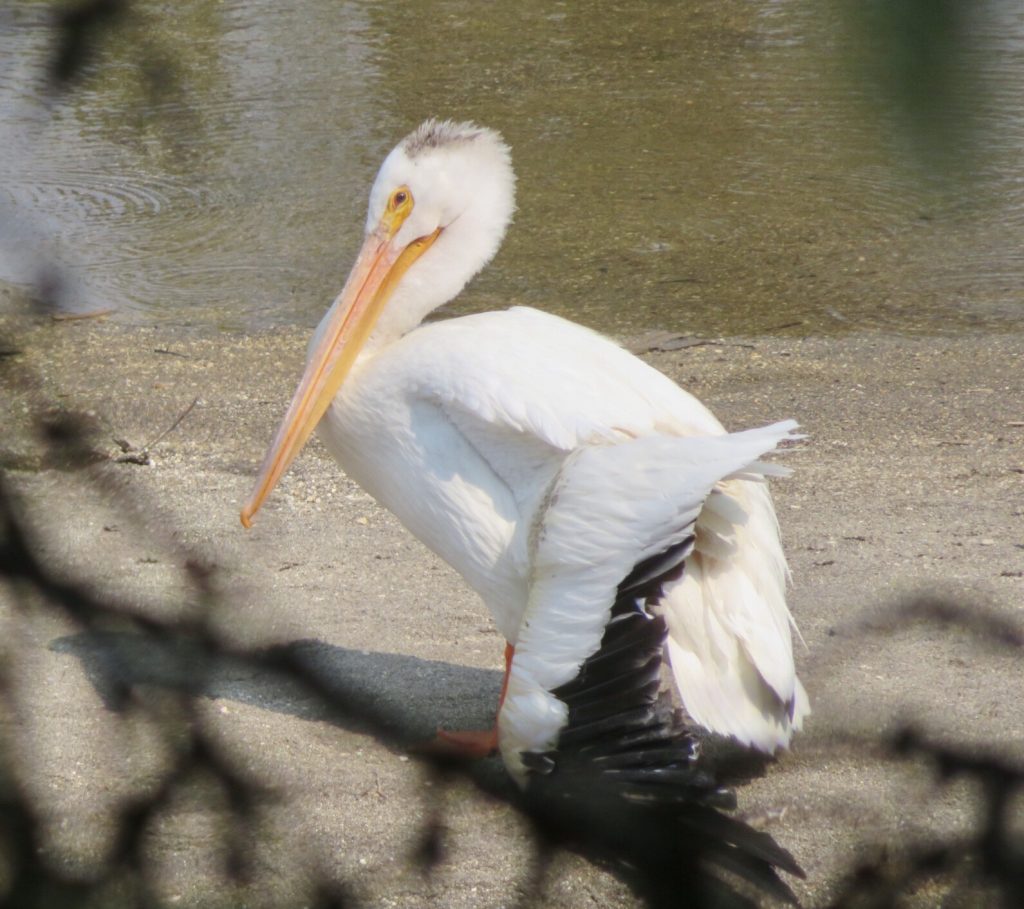
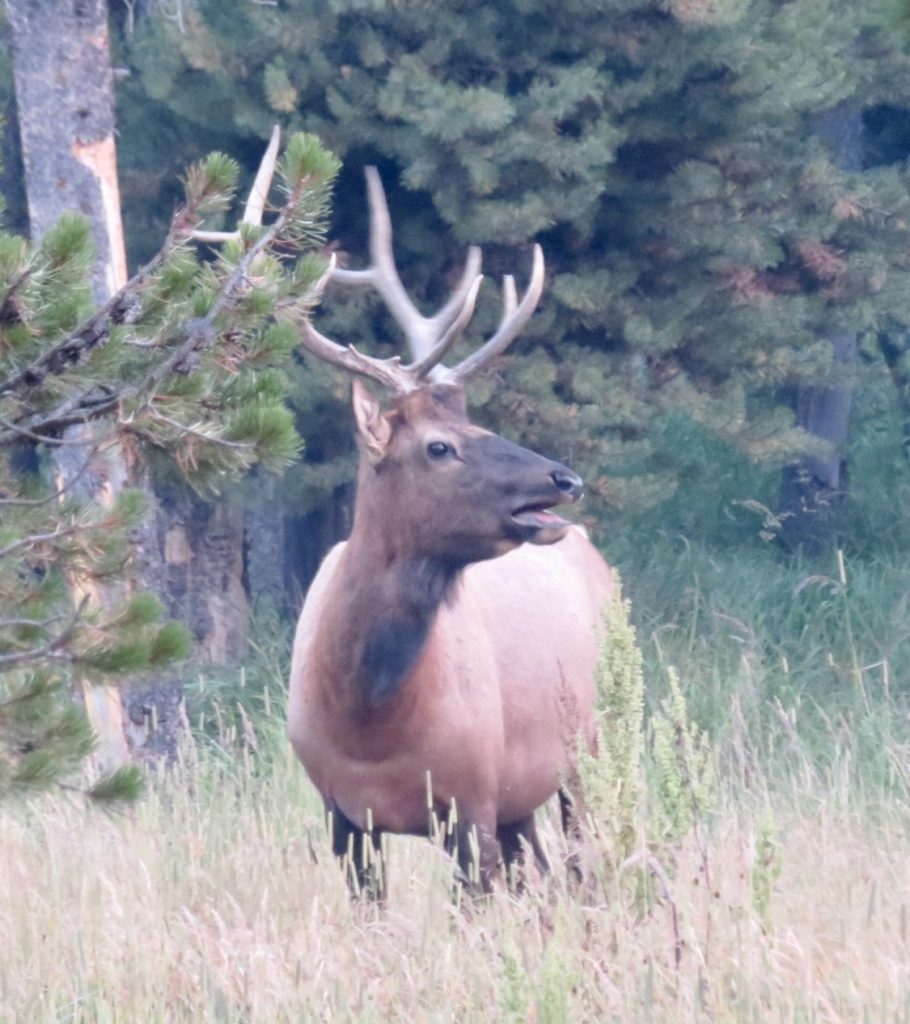
As we headed out toward Sylvan Pass and Yellowstone’s East Entrance one evening, we encountered a peregrine falcon amidst the millions of burned trees from a 2002 forest fire in this part of the national park. We decided that this entrance into Yellowstone would not be our favorite to drive in the motorhome, as it’s quite steep and windy. Sylvan Lake provided pretty sunset pictures, as did Lake Butte Overlook, though everything was hazy because of recent wildfires. The overlook also gave us some great views of several yellow-bellied marmots, who kept running across the road in front of our car (yikes!).
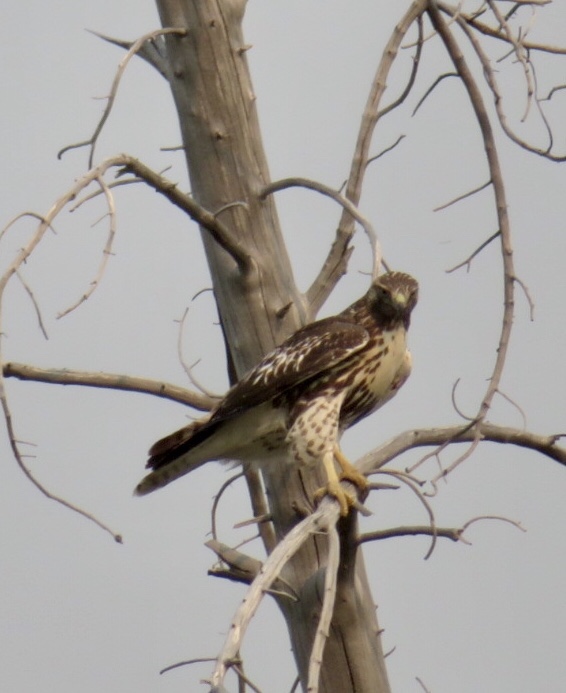
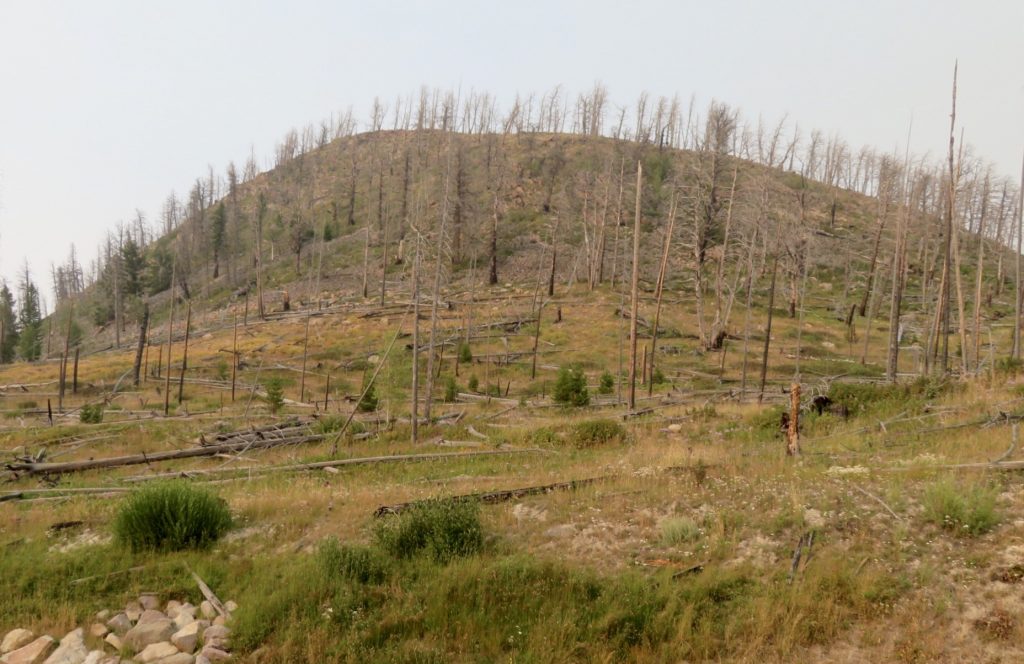
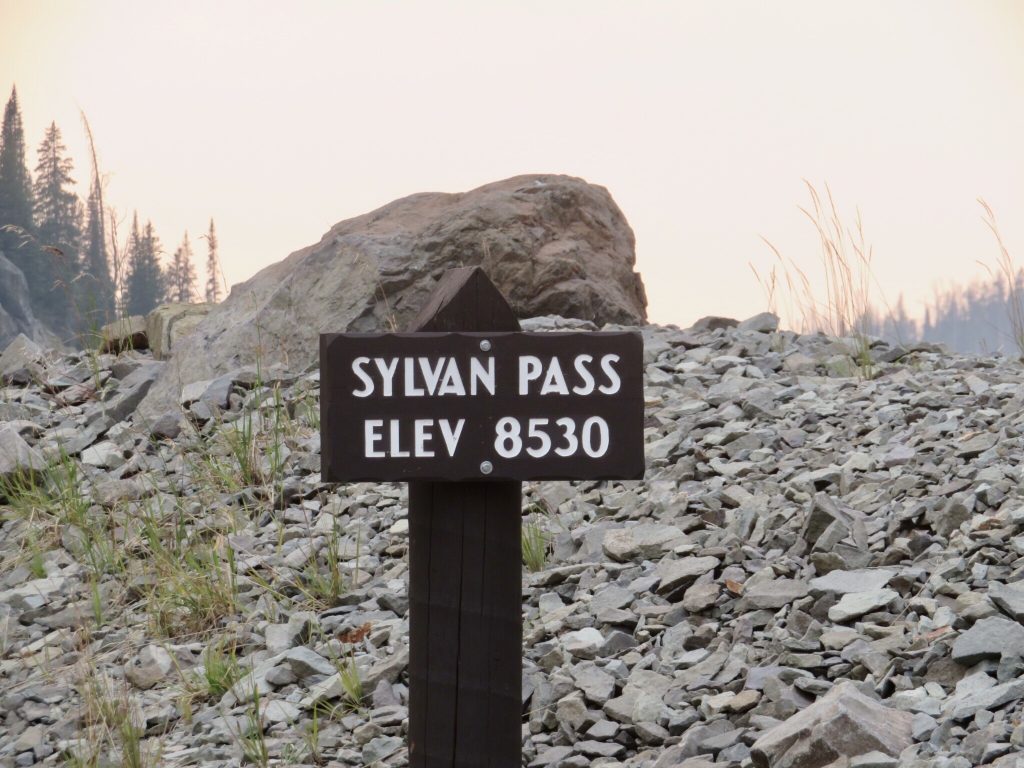
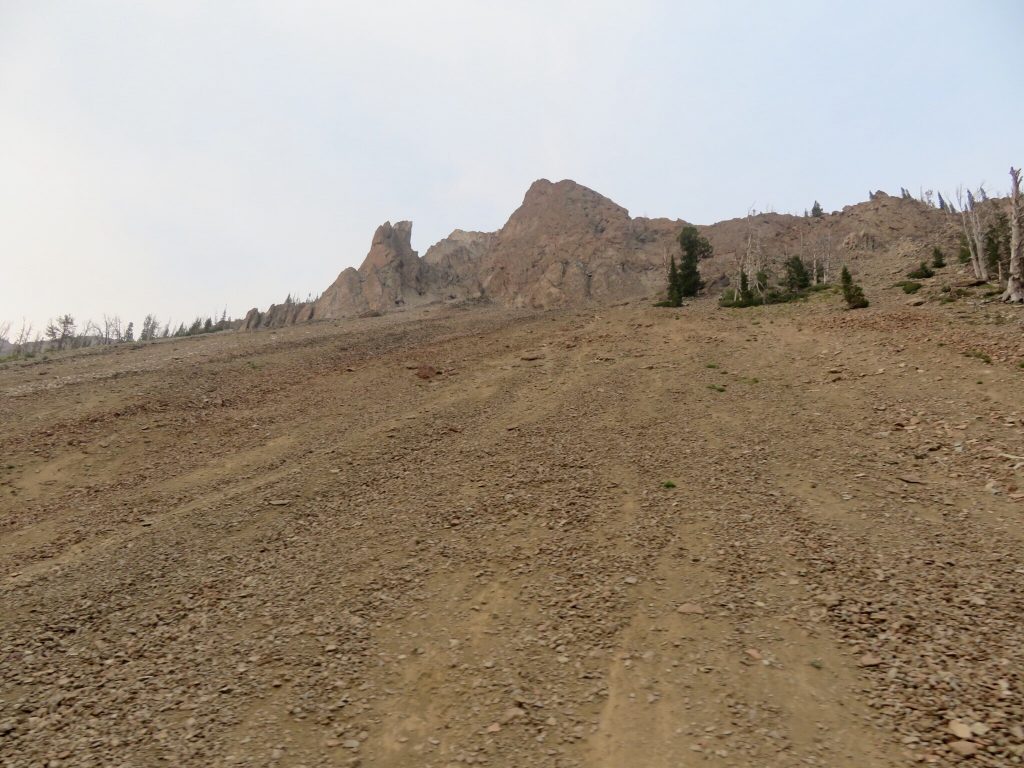
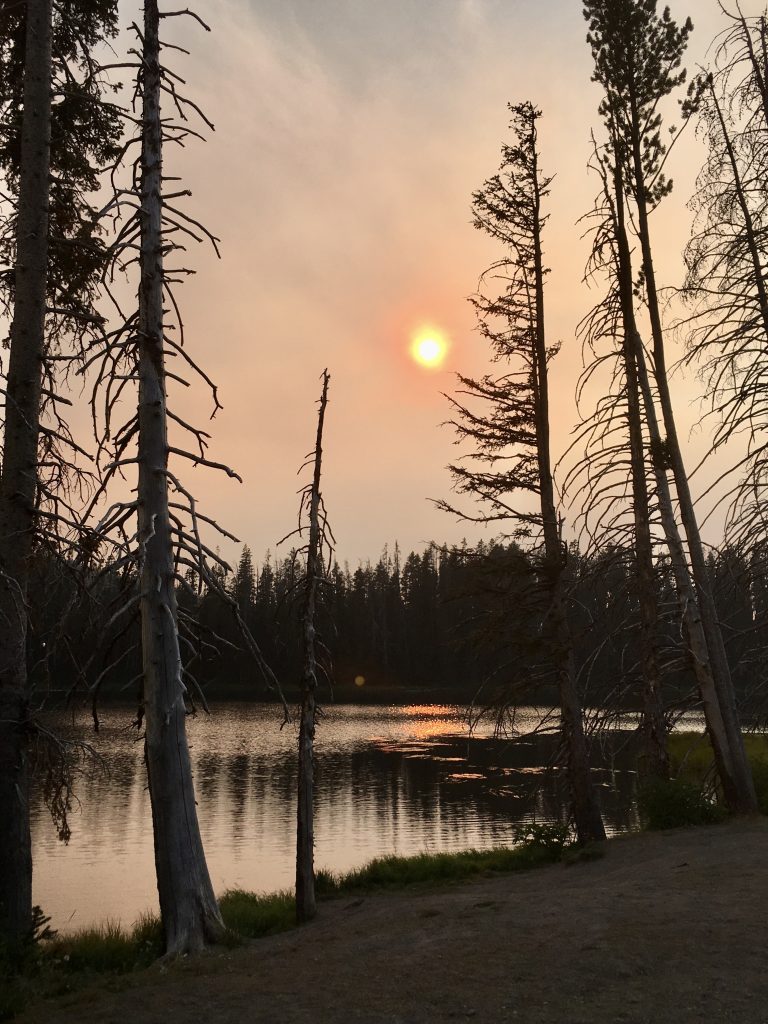
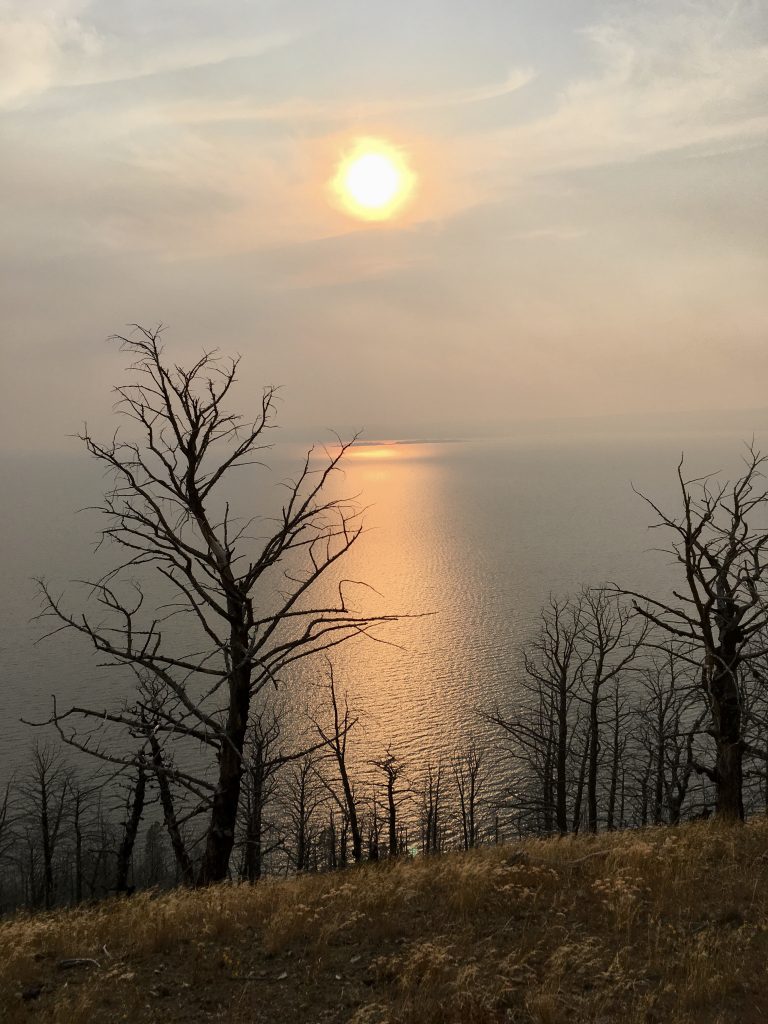
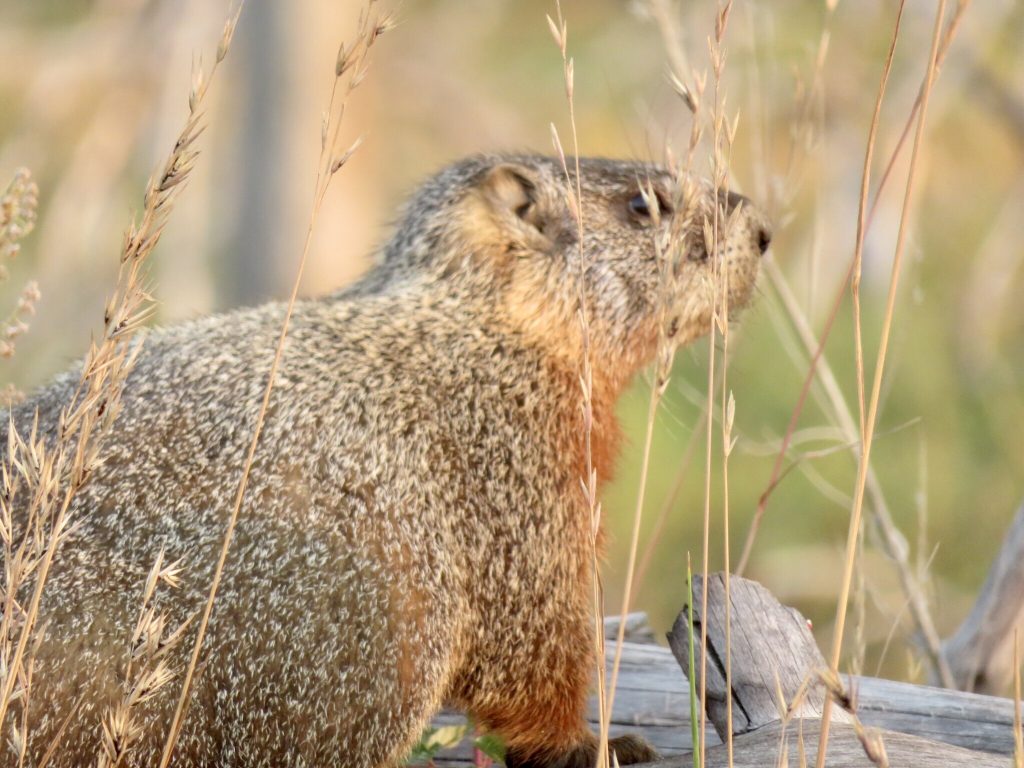
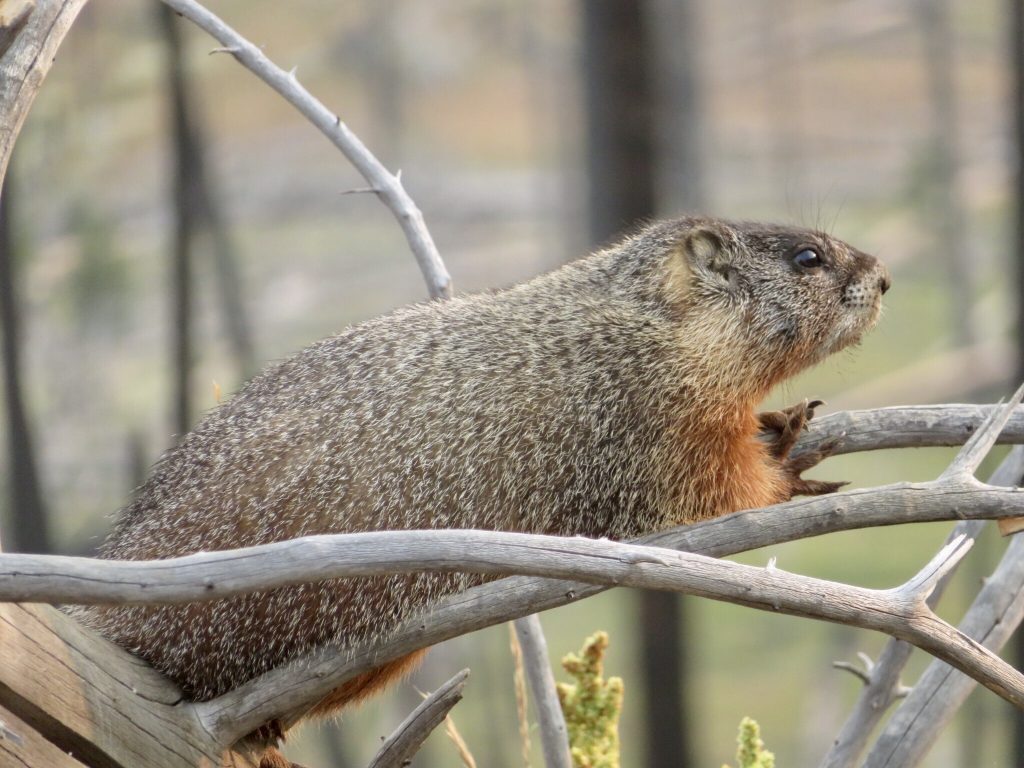
Our time at Bridge Bay ended with our only mule deer sighting in Wyoming, plus a lovely red sunset (helped by the fires).
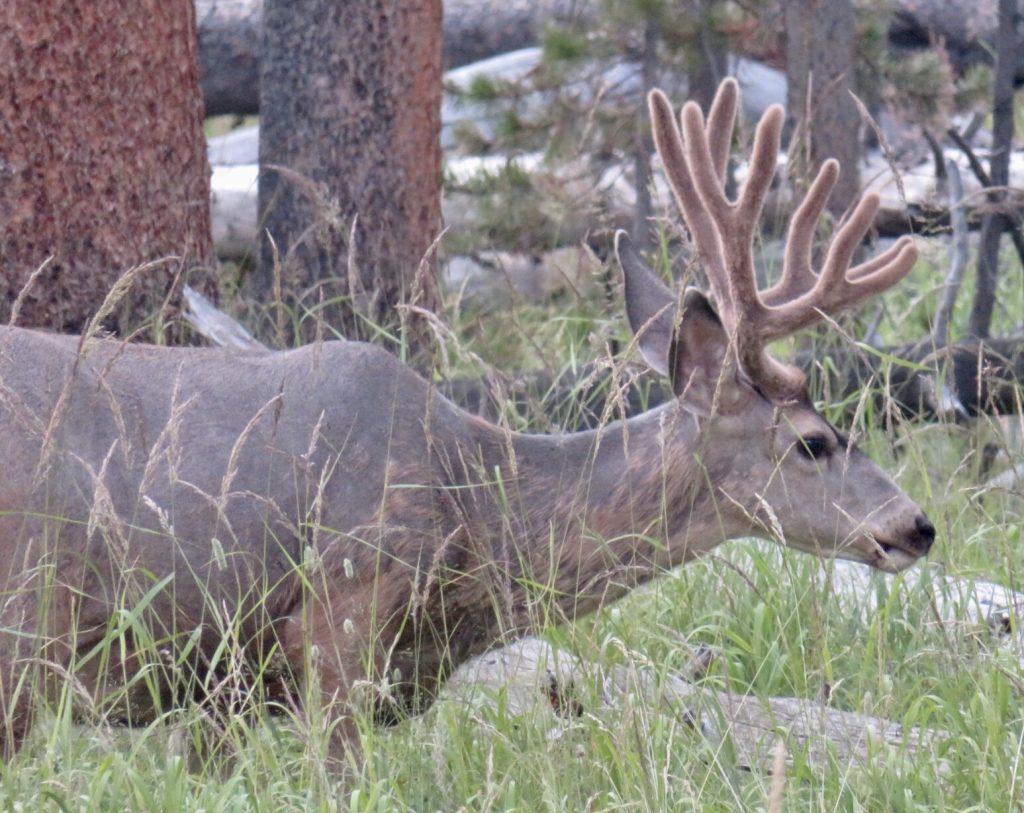
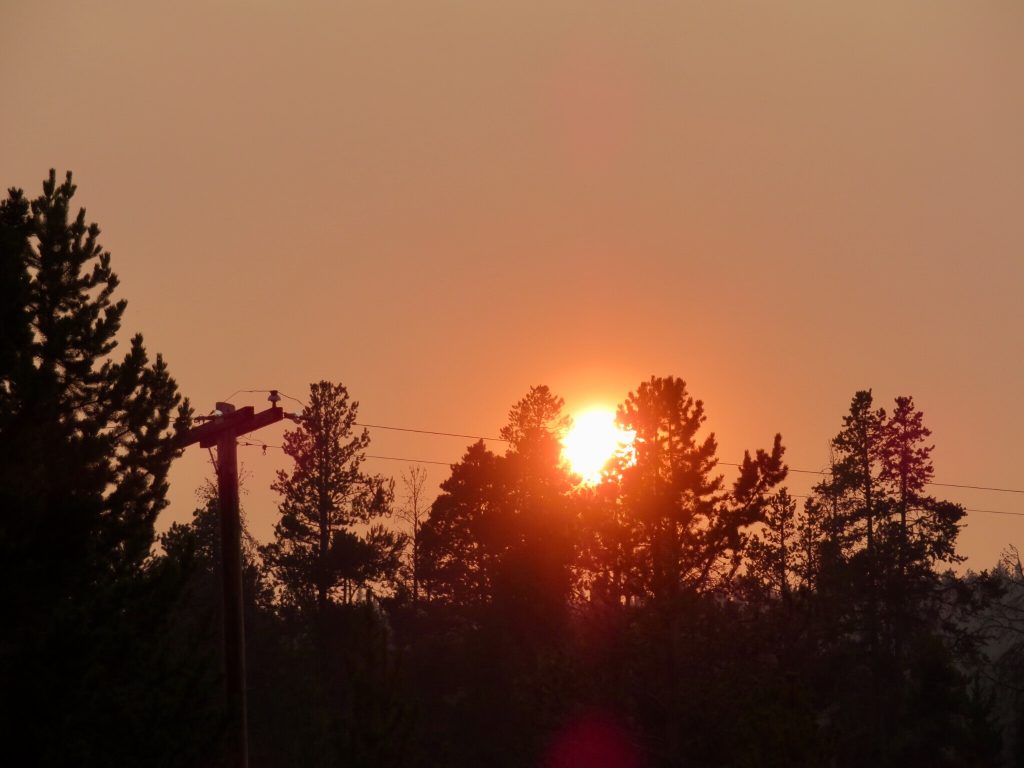
Our last campground in Yellowstone was only 20 miles down the road at Grant Village, also on Yellowstone Lake. Neither Bridge Bay nor Grant Village has any hookups, so we got lots of experience with dry camping, but fortunately, it wasn’t too hot or too cold, and our kitties did really well. Our four nights here began with some small critters—a grasshopper, butterfly, and chipmunk that Leilani interacted with.
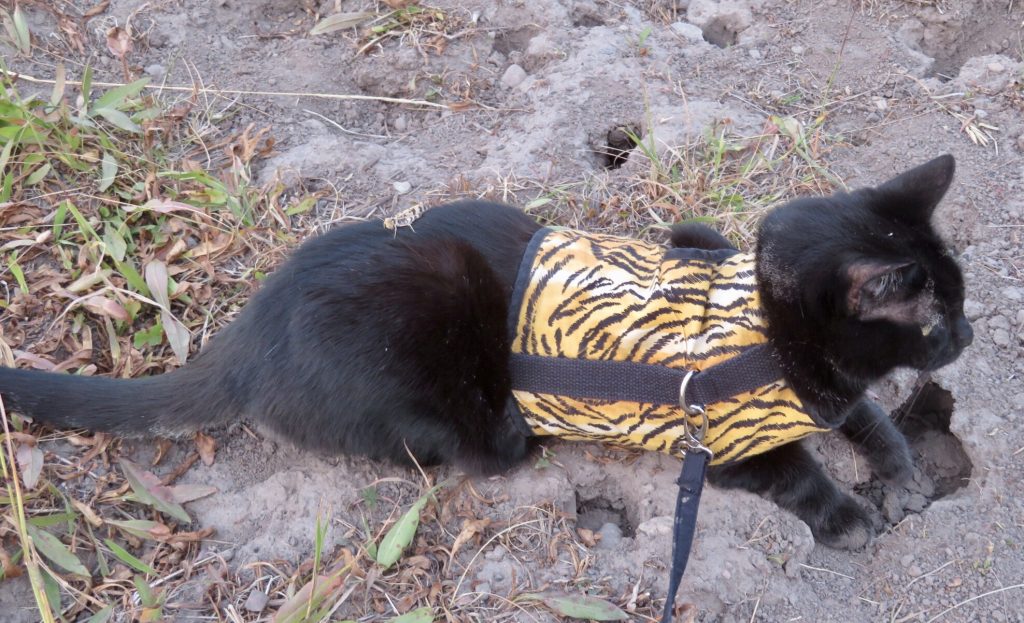
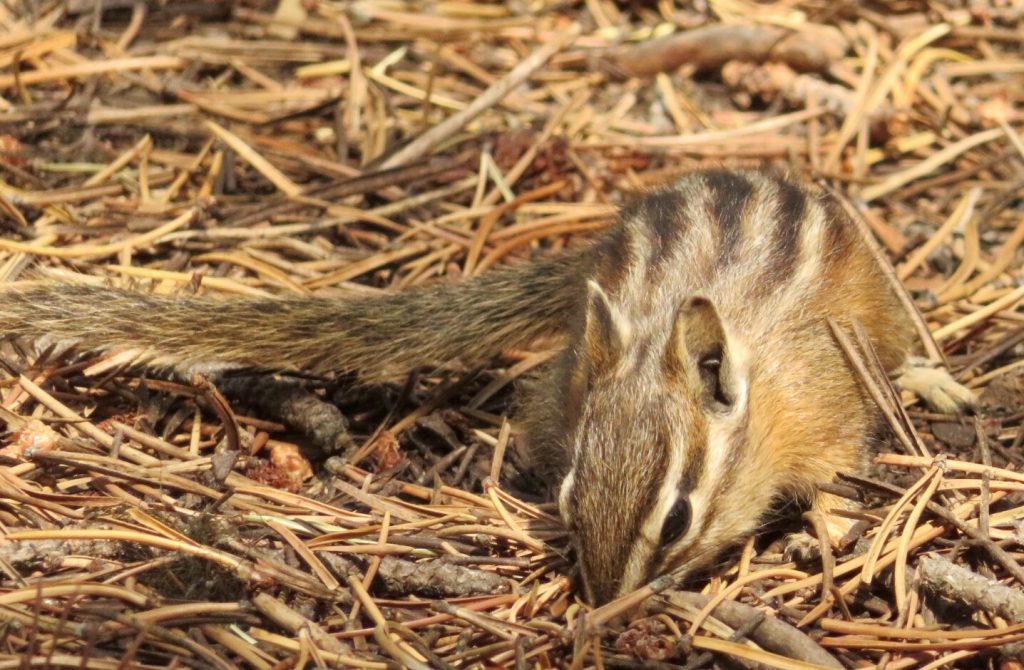
An evening hike between the campground and Yellowstone Lake resulted in spotting multiple female elk, plus one elk calf. Apparently the male elk hang out at Bridge Bay and the females at Grant Village. We wonder who decided that?
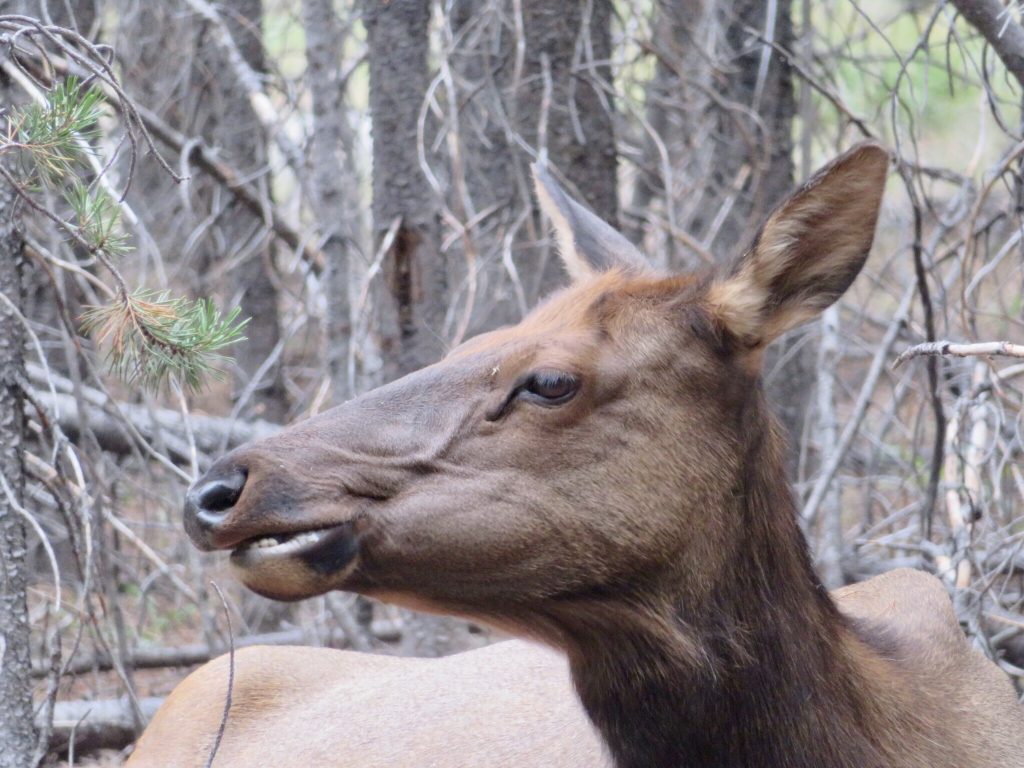
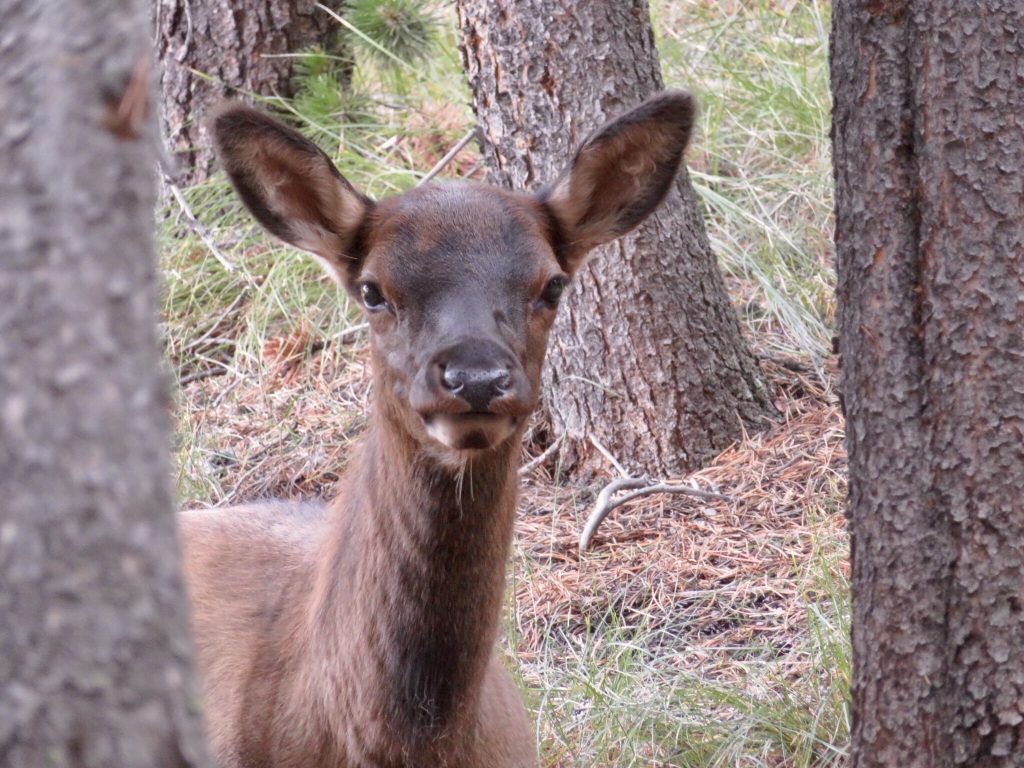
Our plans to hike and bike some less-crowded areas of Upper and Midway Geyser Basins got derailed by a wildfire and road closure, but we hung out in hopes of getting through eventually. In the meantime, we visited West Thumb Geyser Basin, which we hadn’t seen since 2016, and enjoyed this thermal activity right on the edge of Yellowstone Lake.
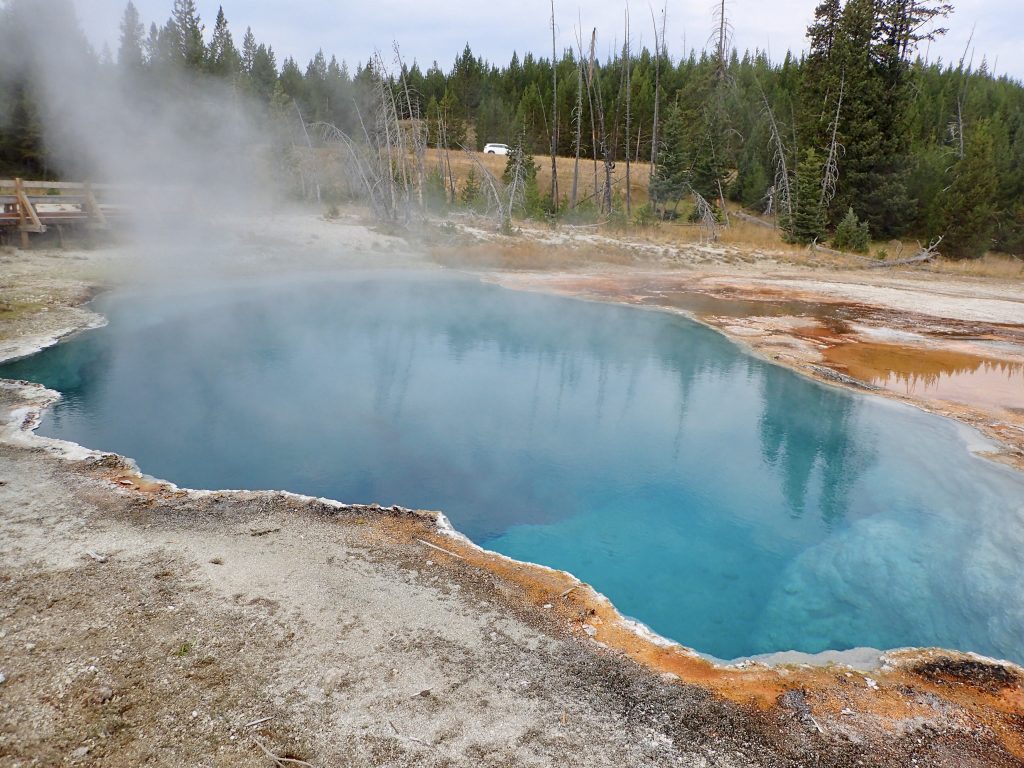
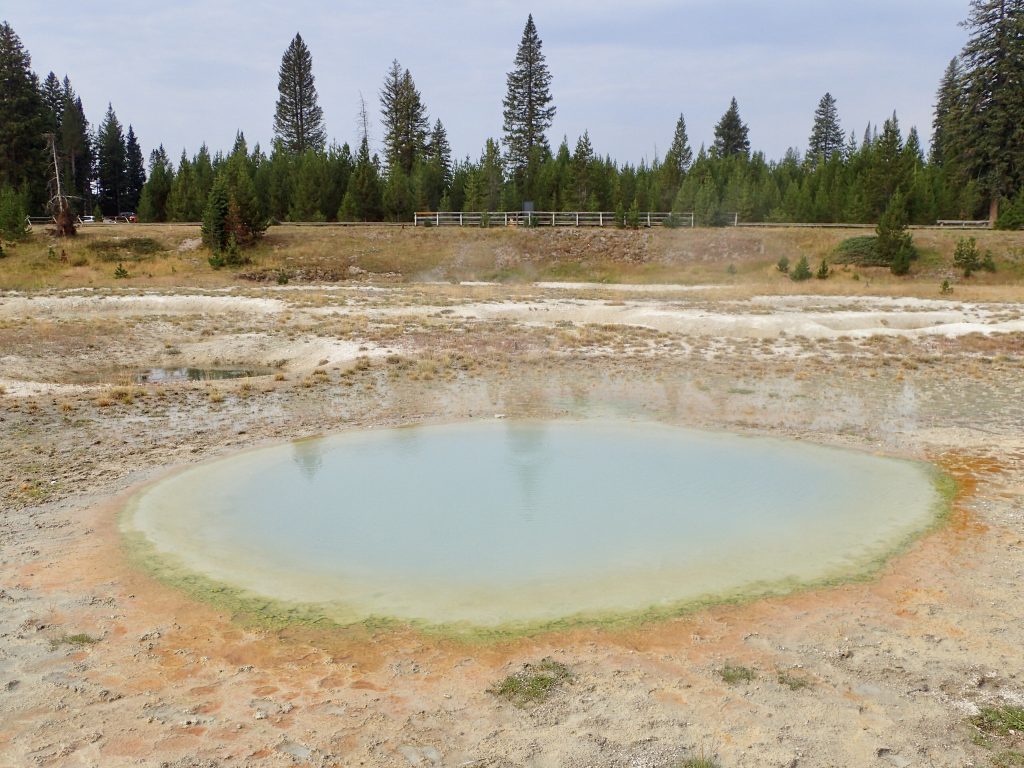
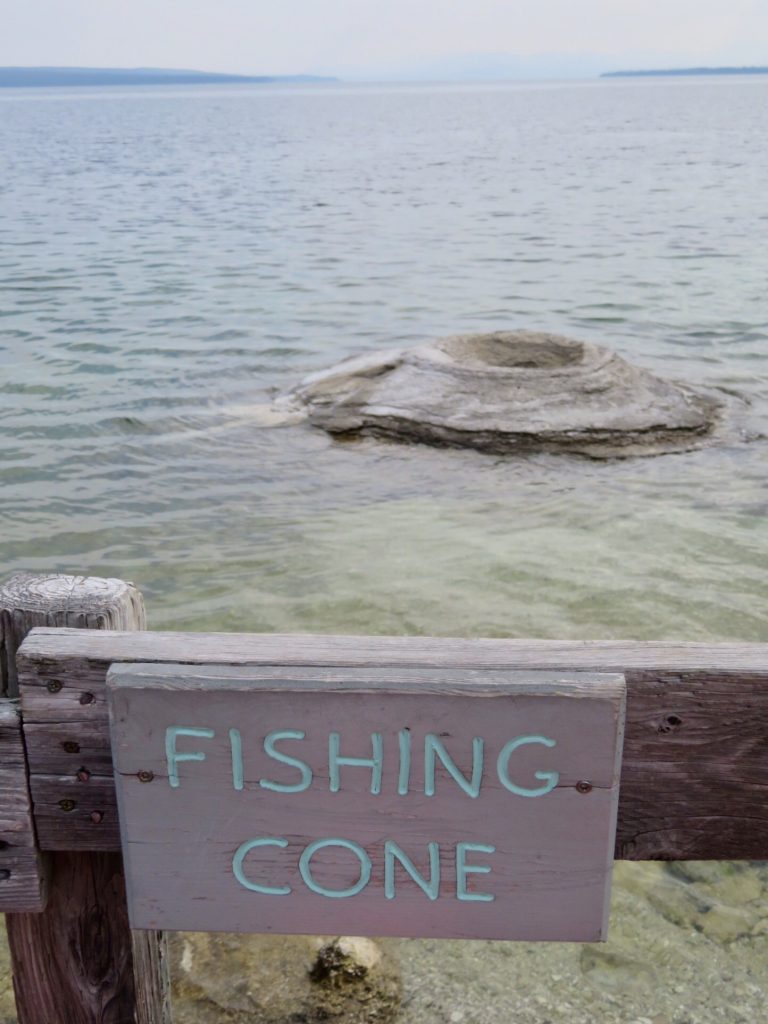
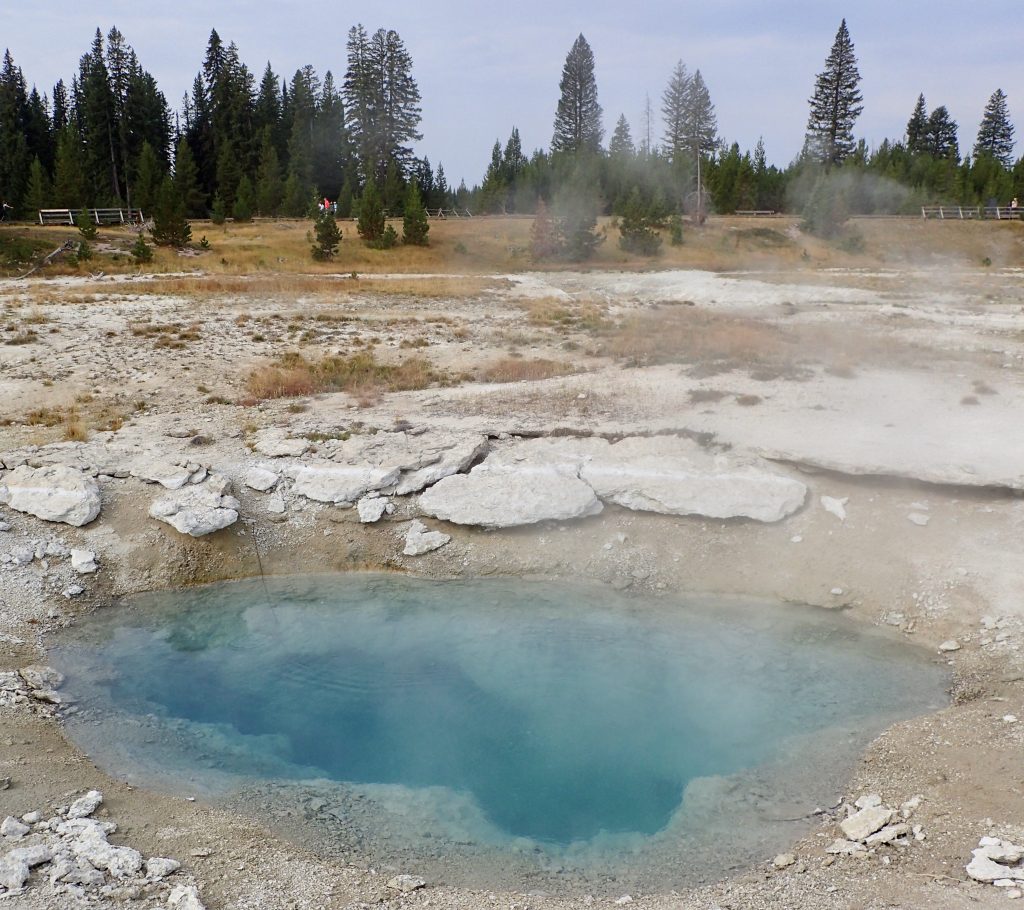
This was also the site of a flock of what we think are buffleheads, out fishing that morning.
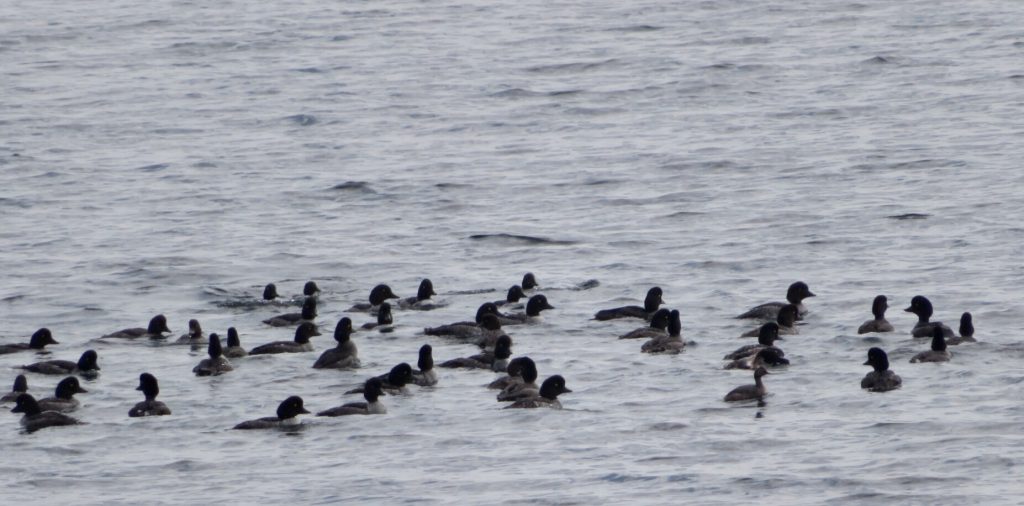
Next day the road to Old Faithful was still closed, so we drove about three miles south and did the easiest hike we’ve ever done in Yellowstone—the 4.8-mile-round-trip hike to Riddle Lake. This was a lovely forest and meadow walk, very flat, and mostly shaded. The lake provided beautiful reflections of the mountains and was a perfect spot for a picnic lunch. Plus, Hank worked on his macro-photography with some beautiful insect shots that he’s been uploading to iNaturalist!
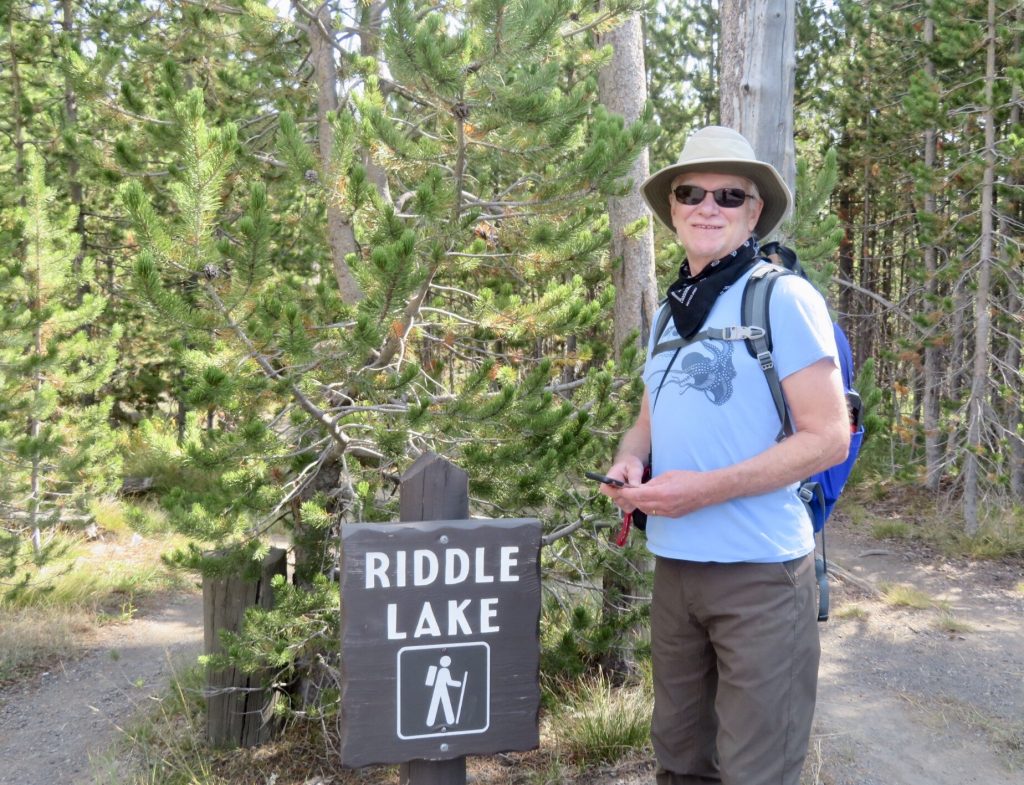
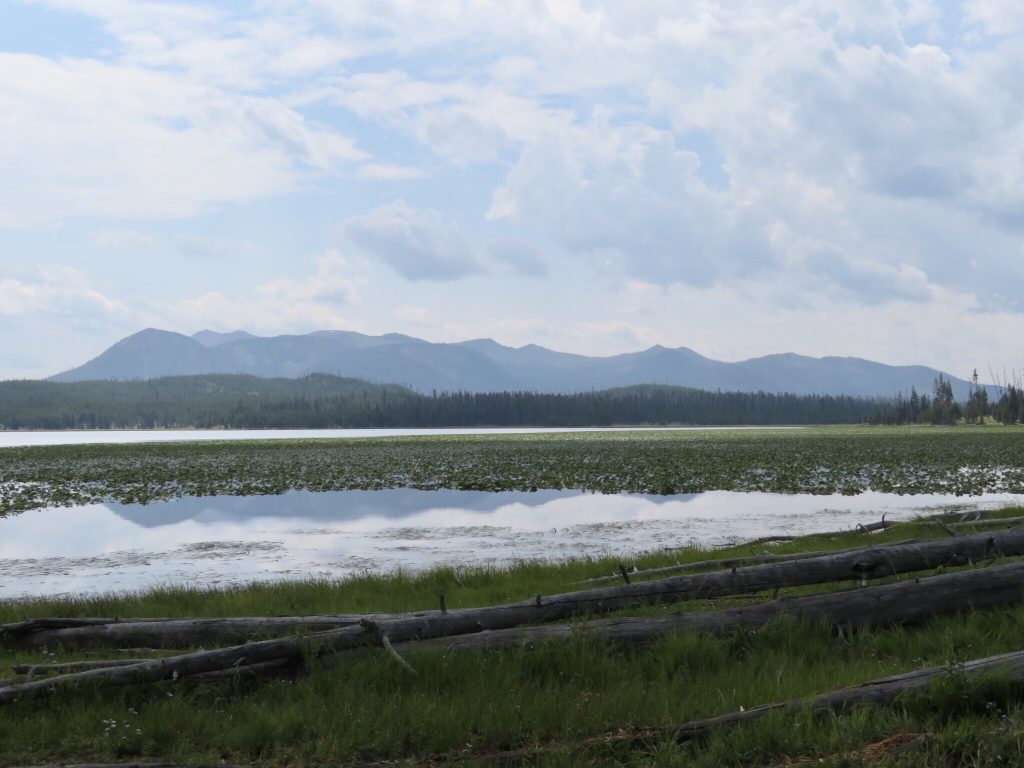
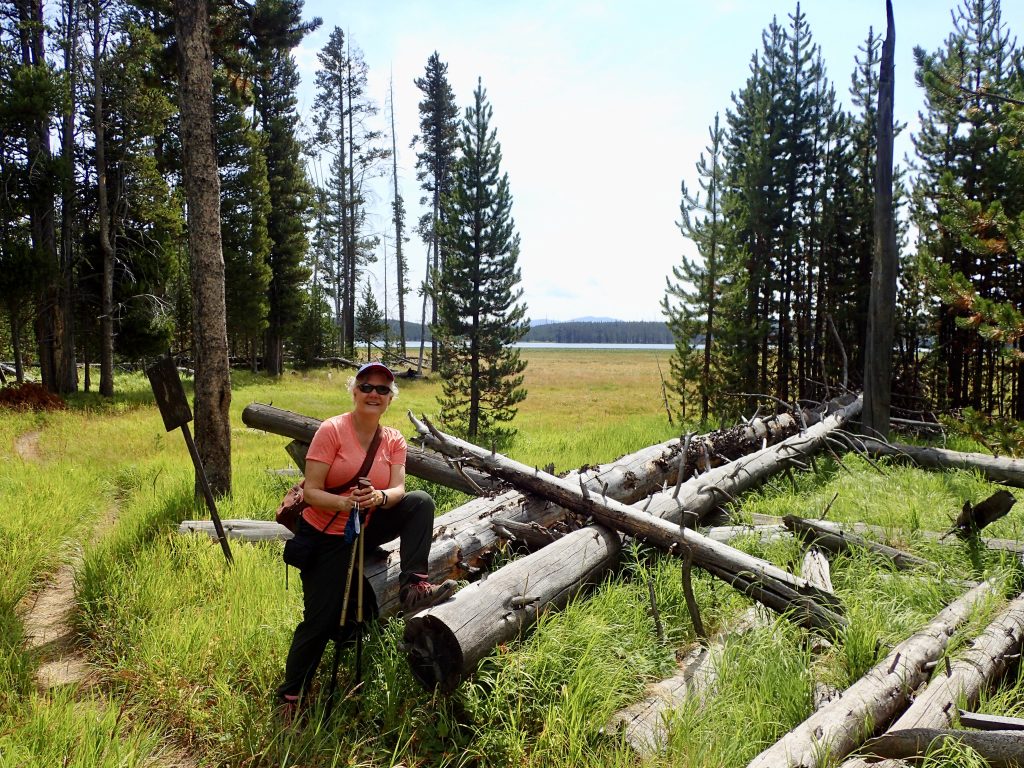
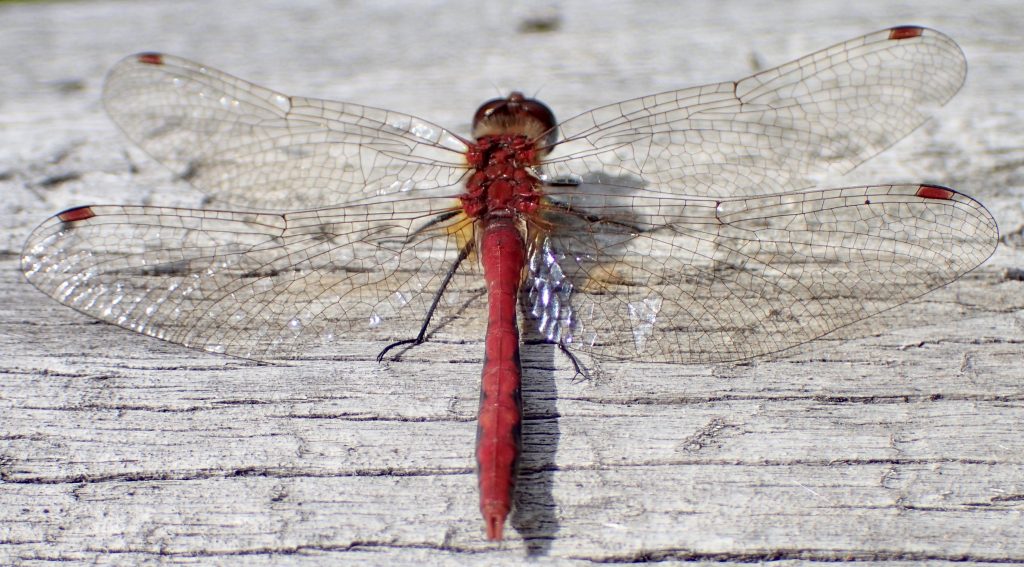
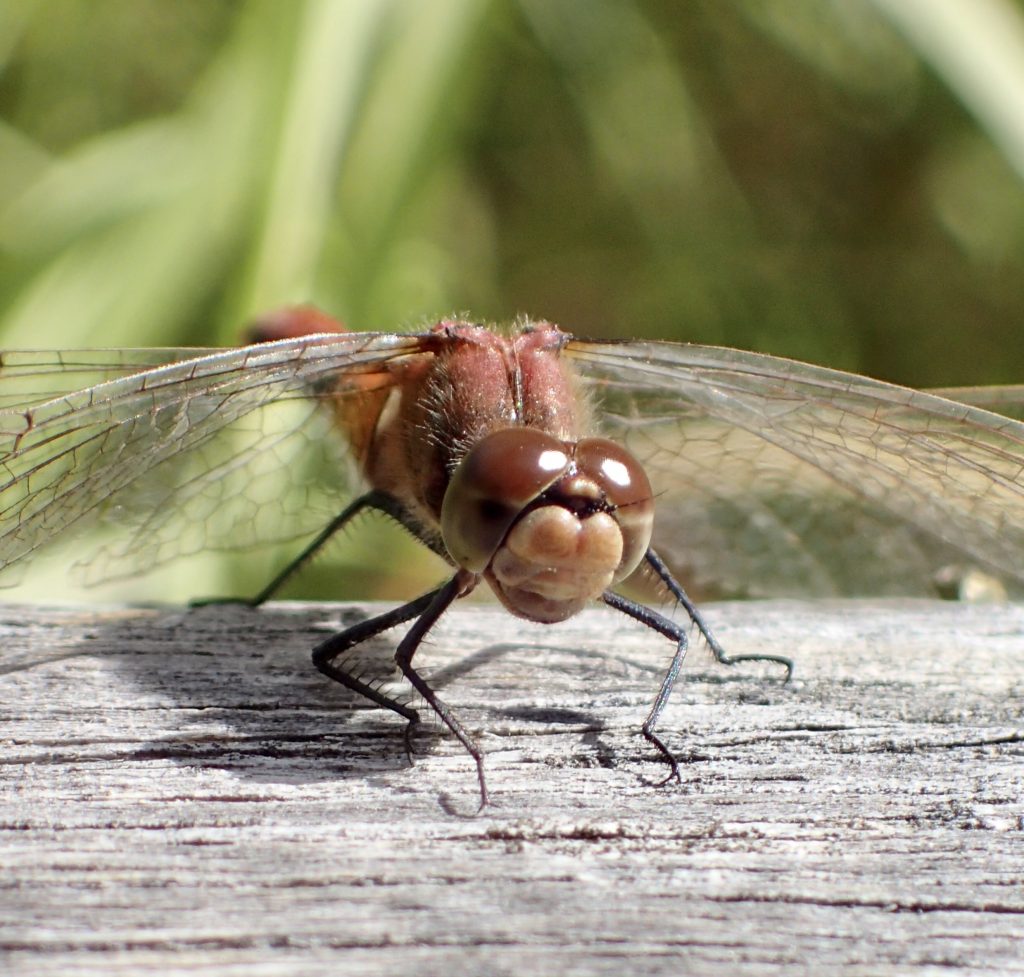
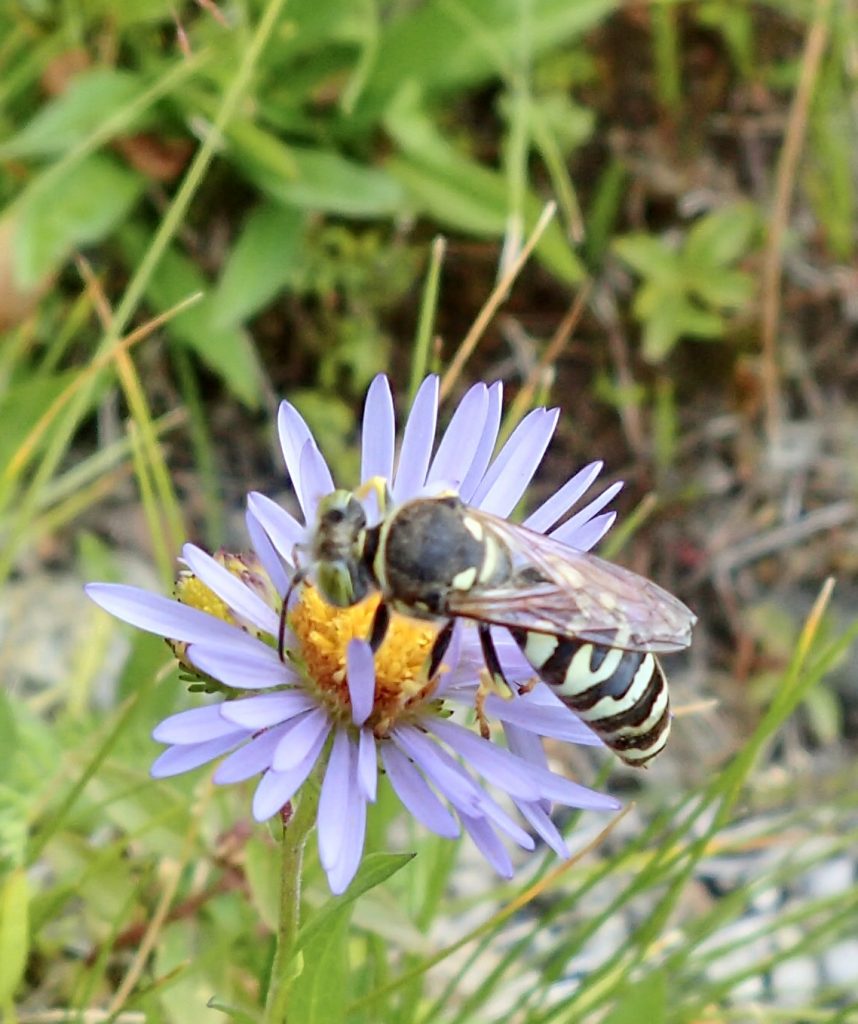
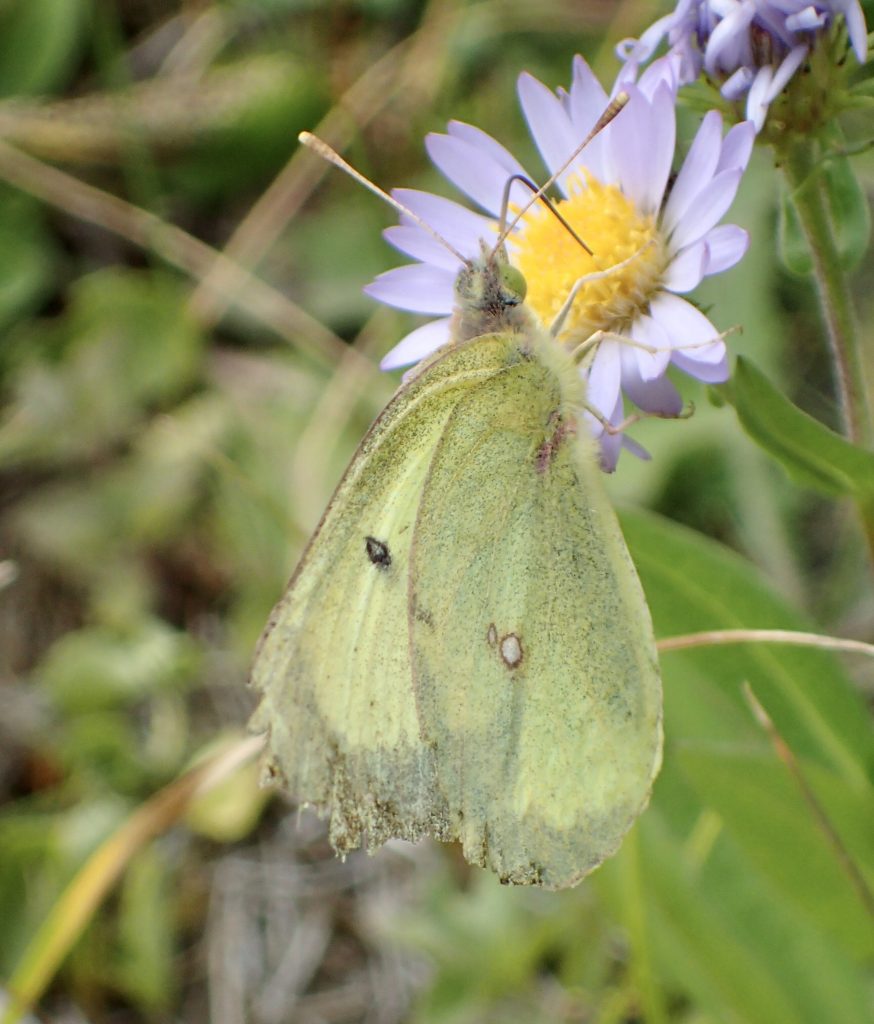
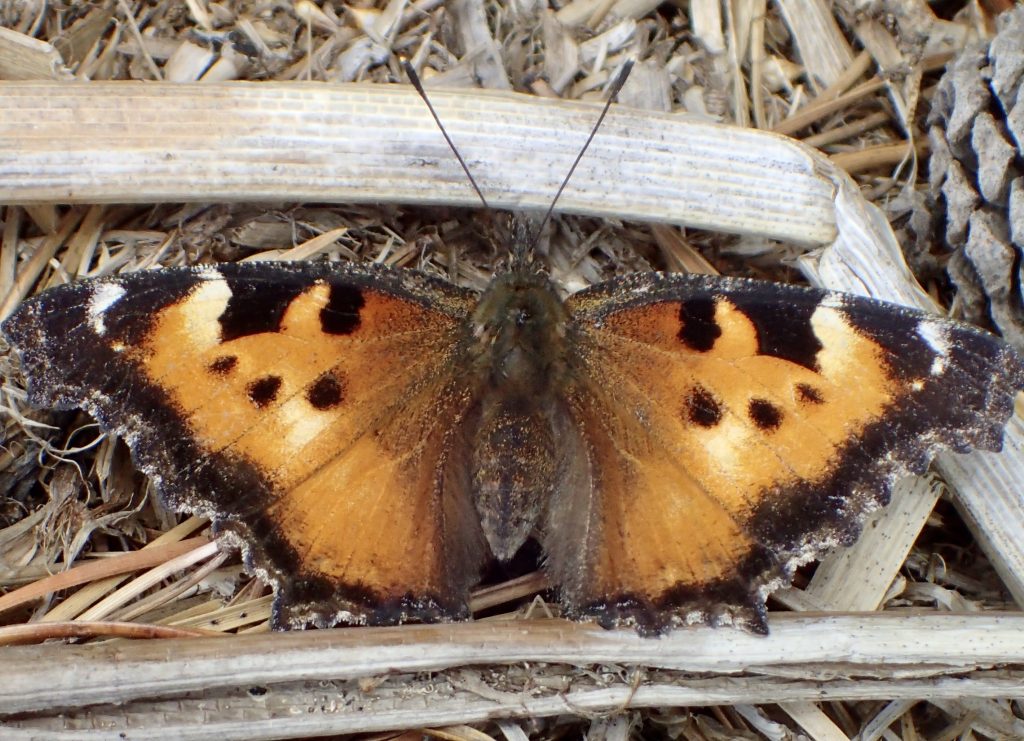
Our evening walk along Yellowstone Lake also provided some great reflections (though no more elk), as it was perfectly calm.
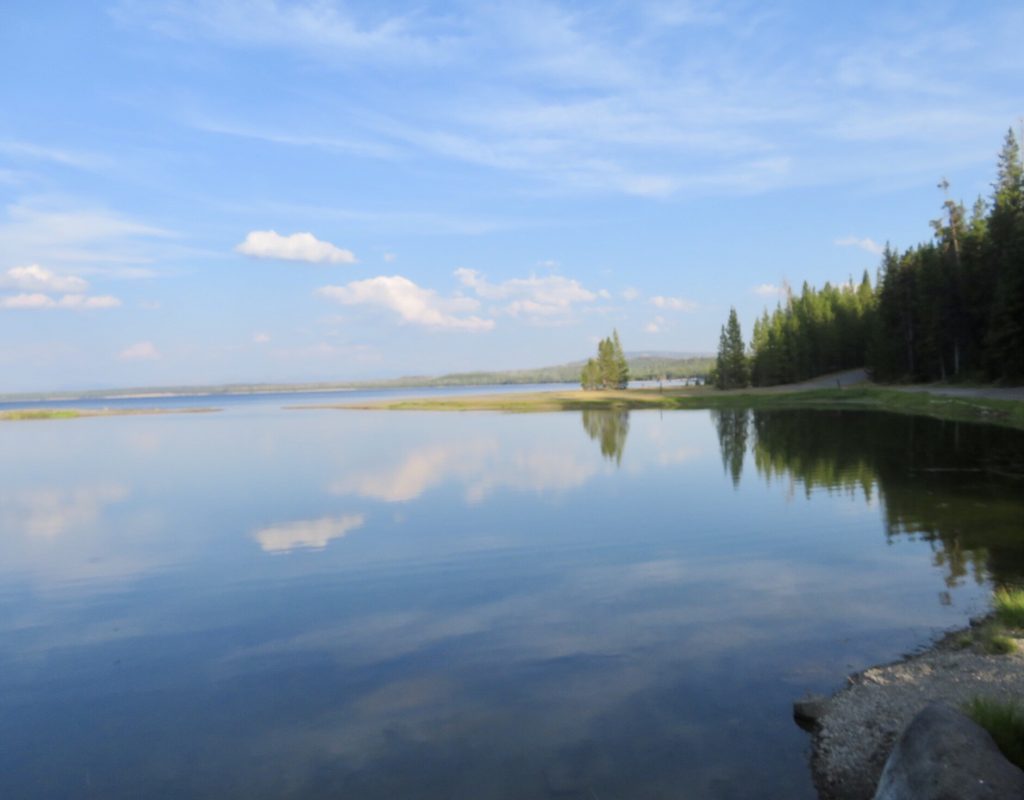
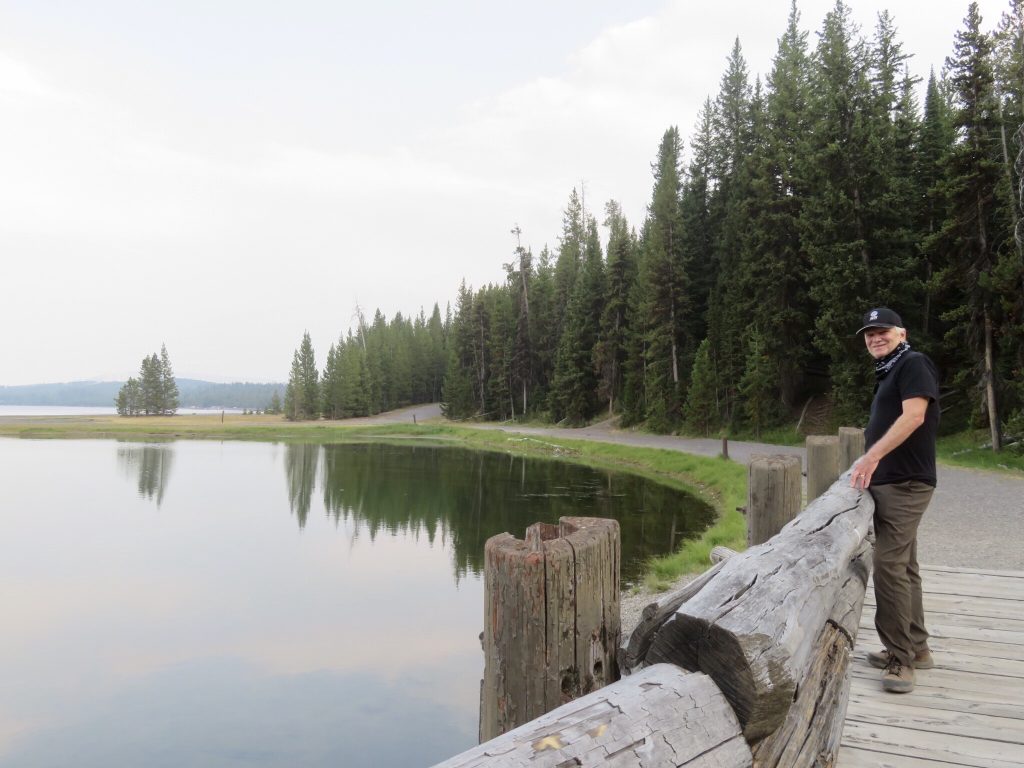
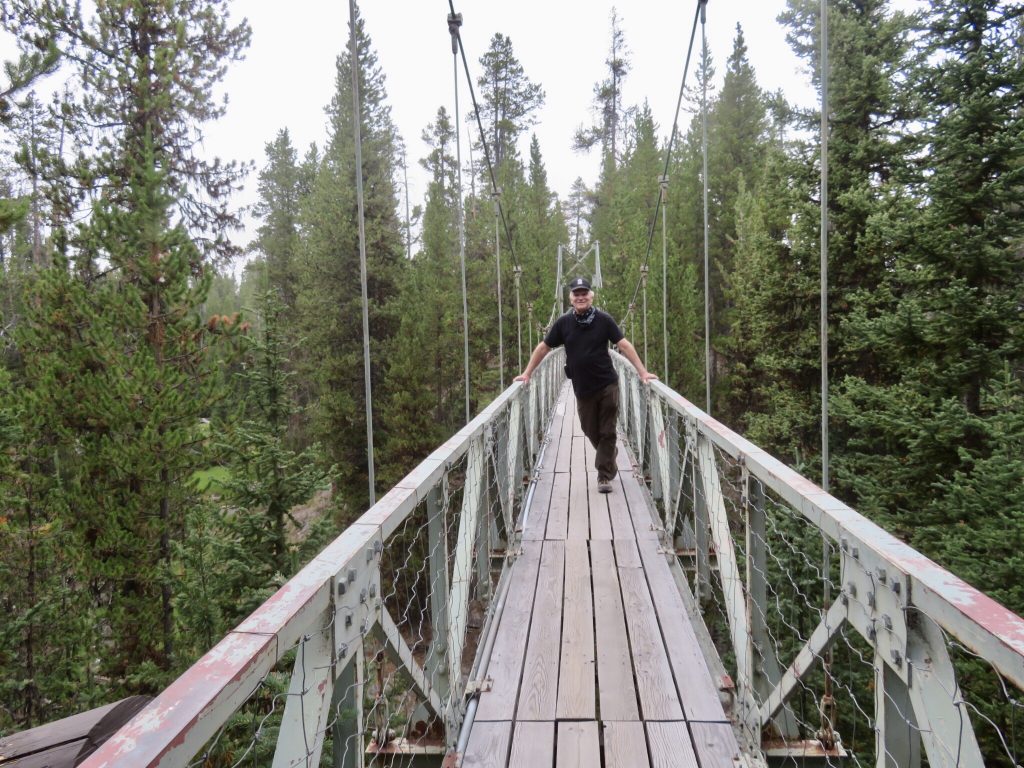
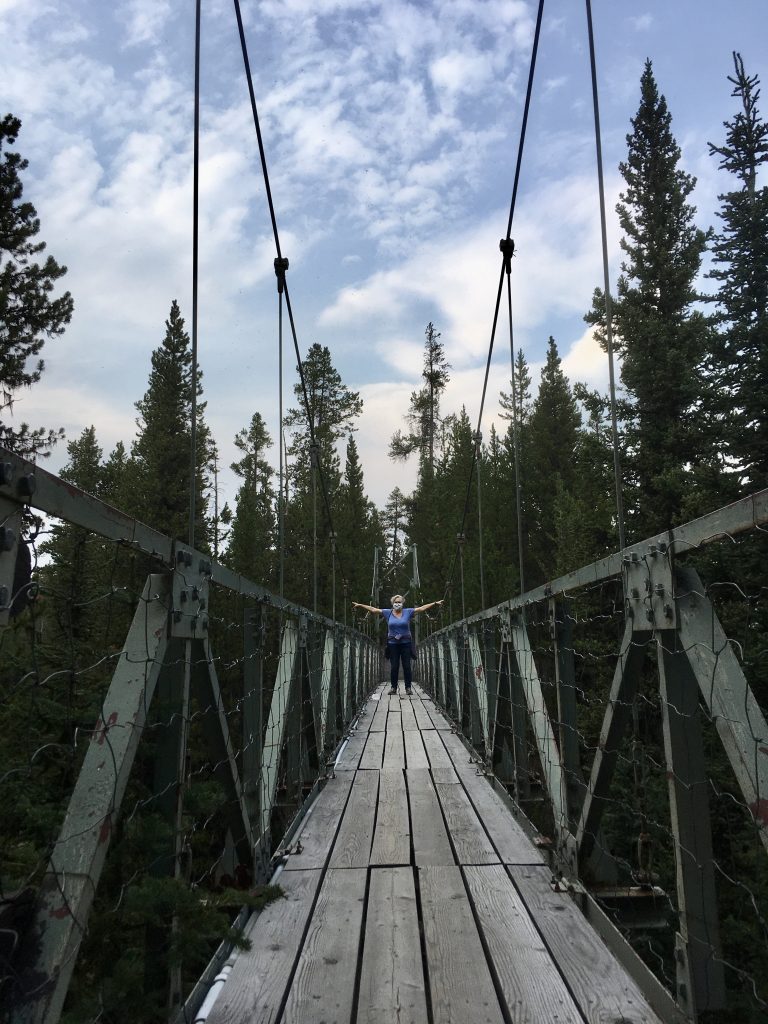
When we went to bed that night, our plan was to get up early, head the long way around to Midway Geyser Basin (about 75 miles) so we could hike the Fairy Falls Trail to the Grand Prismatic Spring Overlook (this hot spring is THE most photographed thermal feature in Yellowstone, but when you see it from the boardwalk, you miss most of the colors). This had been on our must-do list for this trip, and we weren’t going to let a road closure (due to fire) stop us. Thunderstorms that night gave us hope that the fires might finally be extinguished.
Well, in the midst of breakfast, I got a text alert that the road in the other direction had been closed due to an overturned tanker truck. So, we were literally trapped, only able to travel a few miles away from our campground. While we took care of RV chores, I prayed for something to open up, and about 8:15 I got another alert that the original road (over Craig Pass) had reopened. The wildfires were out, and we could take the short drive to our trailhead. We quickly headed out, knowing this trailhead parking lot frequently fills before 9:00 a.m.
Rain and thunder did not deter us. After parking, we headed up the Fairy Falls Trail, watching the skies clear as we walked. When we got to the Grand Prismatic Spring overlook, the sun came out a few minutes later and showed us the beauty of this third-largest hot spring in the world. Previous visits where we had looked at the spring from eye level had never revealed the colors, but getting up high made the difference! This view was so pretty we didn’t mind having to cancel our bike ride to Lone Star Geyser (because of the Lone Star fire that had just passed through).
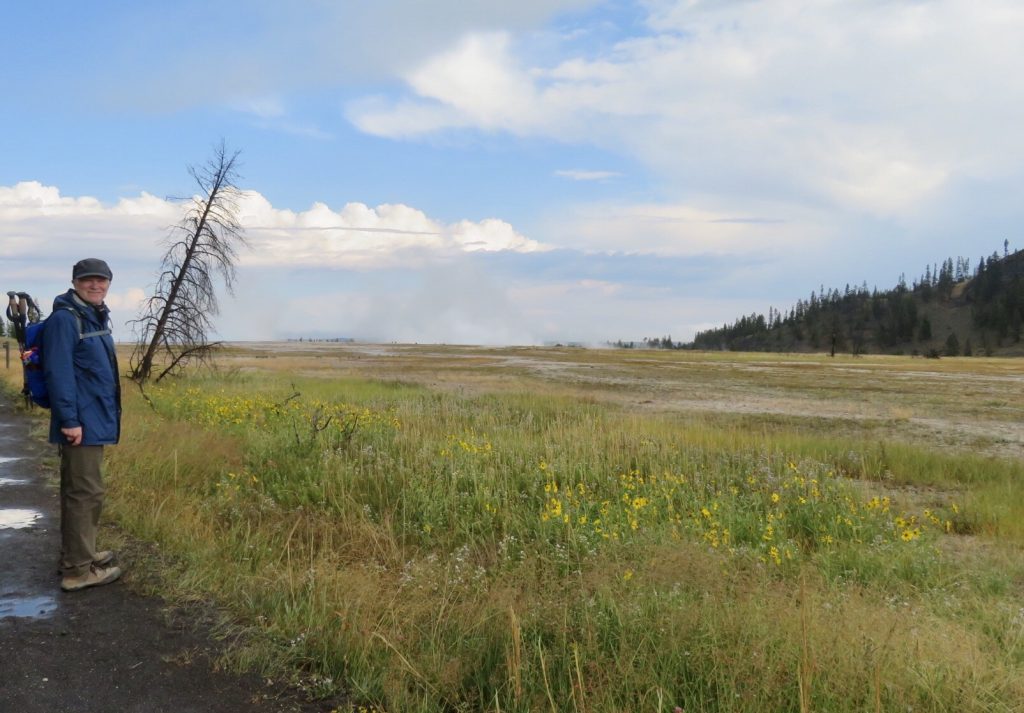
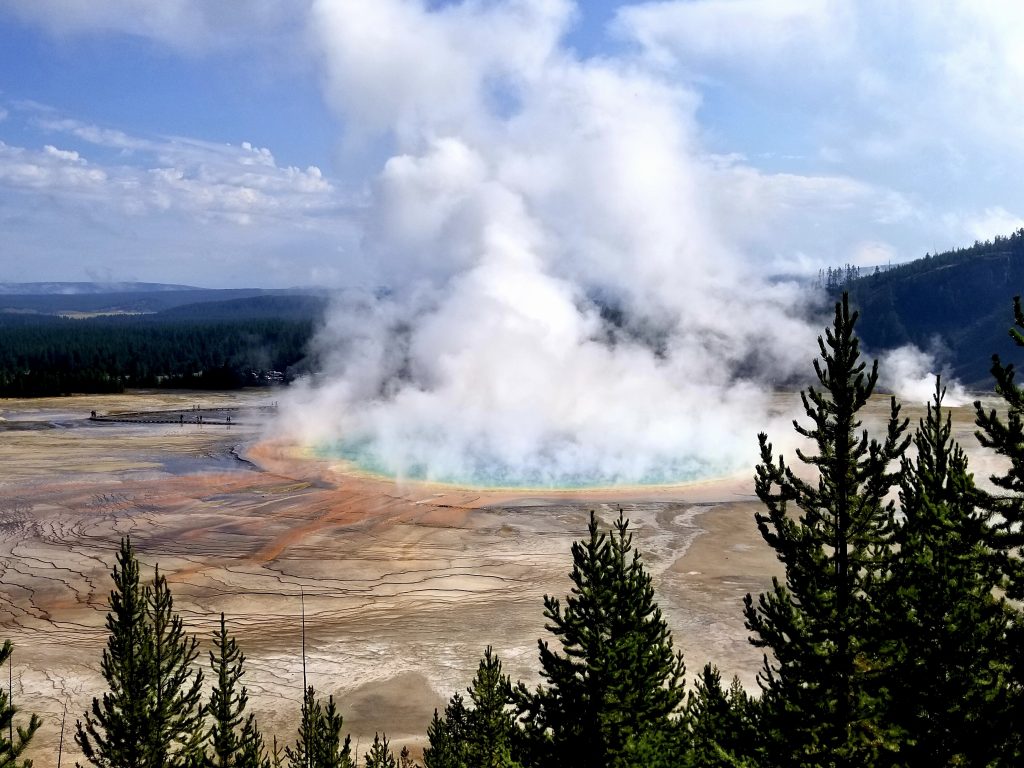
We also managed socially-distanced views of Castle Geyser and Old Faithful from one of the boardwalks, rather than sitting with the masses. An old male bison seemed rather disinterested in the geyser activity.
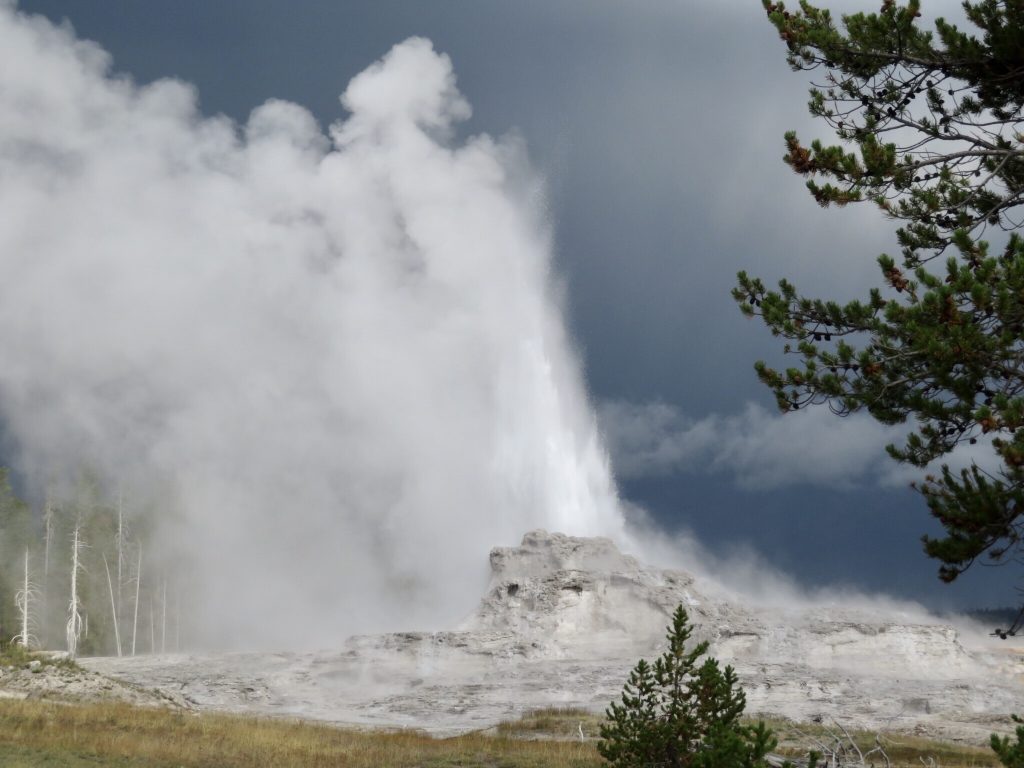
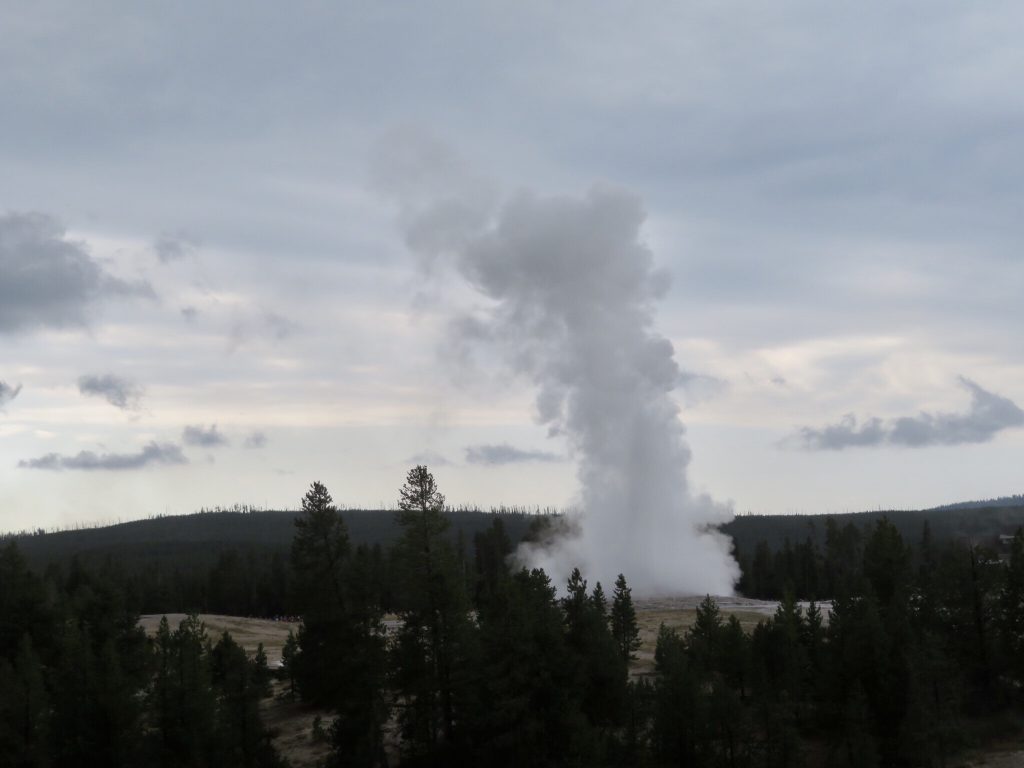
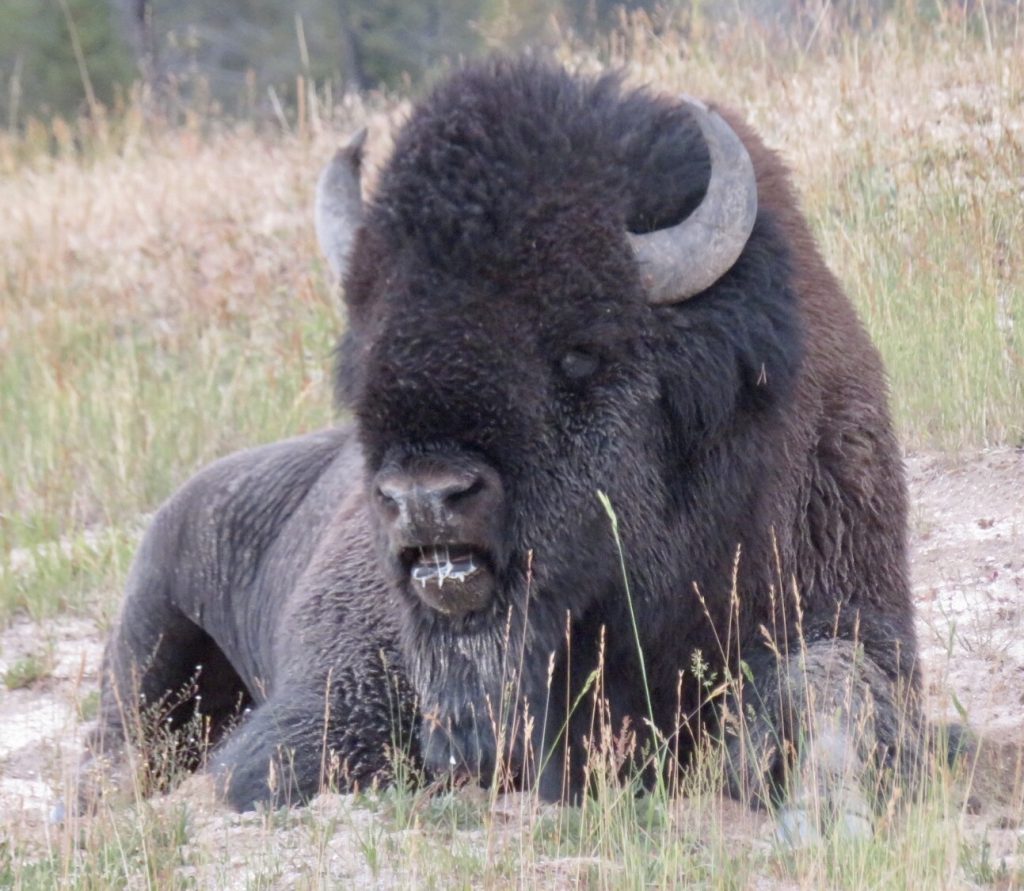
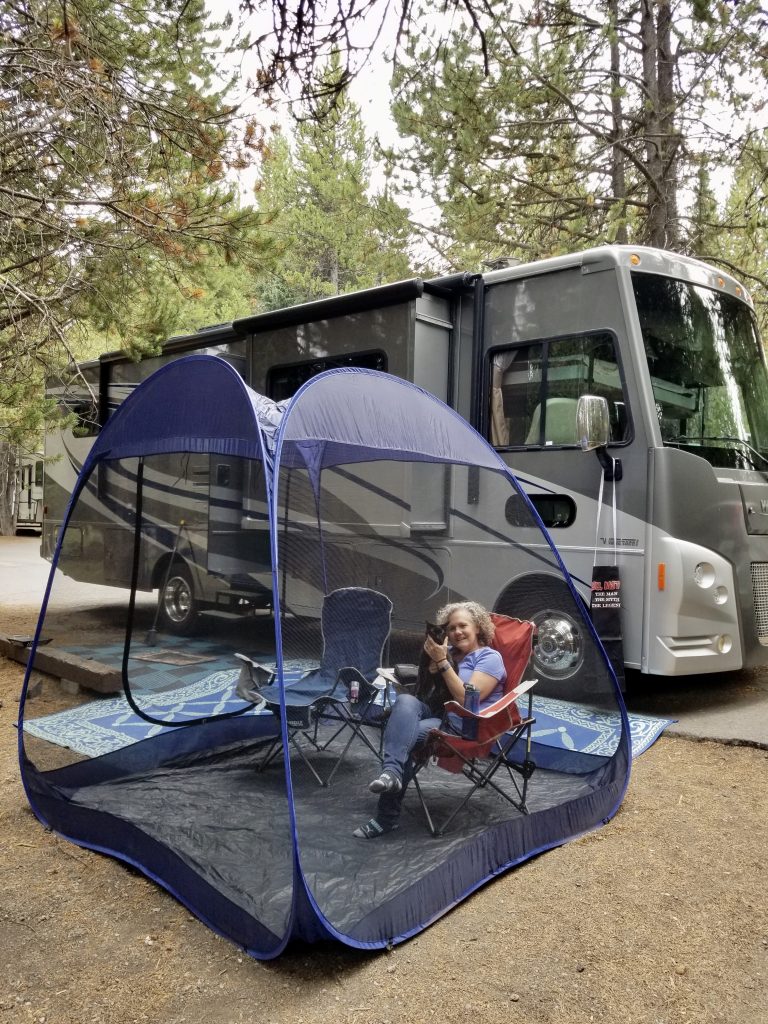
We left Yellowstone the next day and headed back for one more night to Grand Teton National Park. The only high-priority animal we hadn’t yet seen on this trip was a grizzly bear, and we knew that there had been one hanging around the Oxbow Bend area of Grand Teton NP. After setting up camp, we headed out in search of this grizzly. We found lots of people with binoculars and cameras, and for three hours we kept missing this mama grizzly and her four cubs as they crossed and recrossed the main road. At last, we got a glimpse of mama bear plus one cub. Mama was clearly trying to shoo her cub away from the road and not going to move until cub had returned to the forest. No glimpses of the other three cubs, alas, though we saw a video of them playing in the road just a few minutes before we arrived.
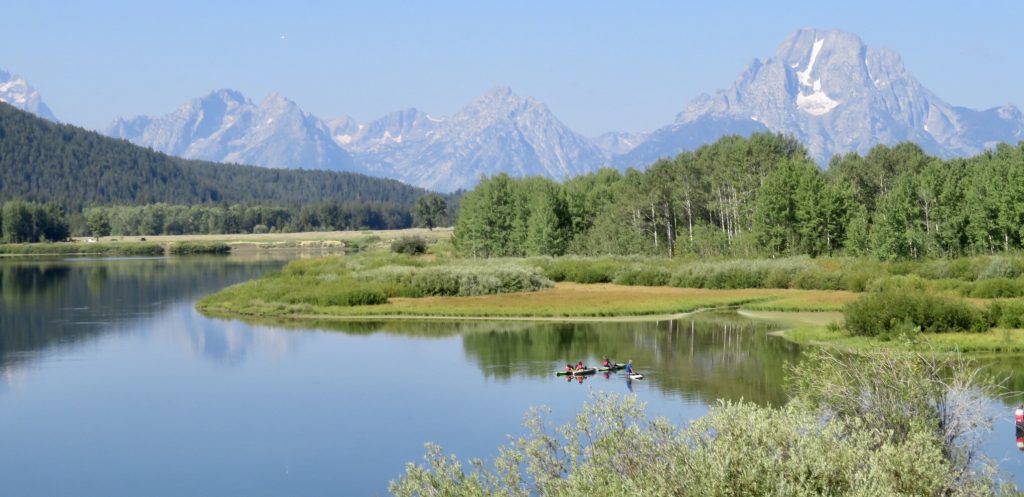
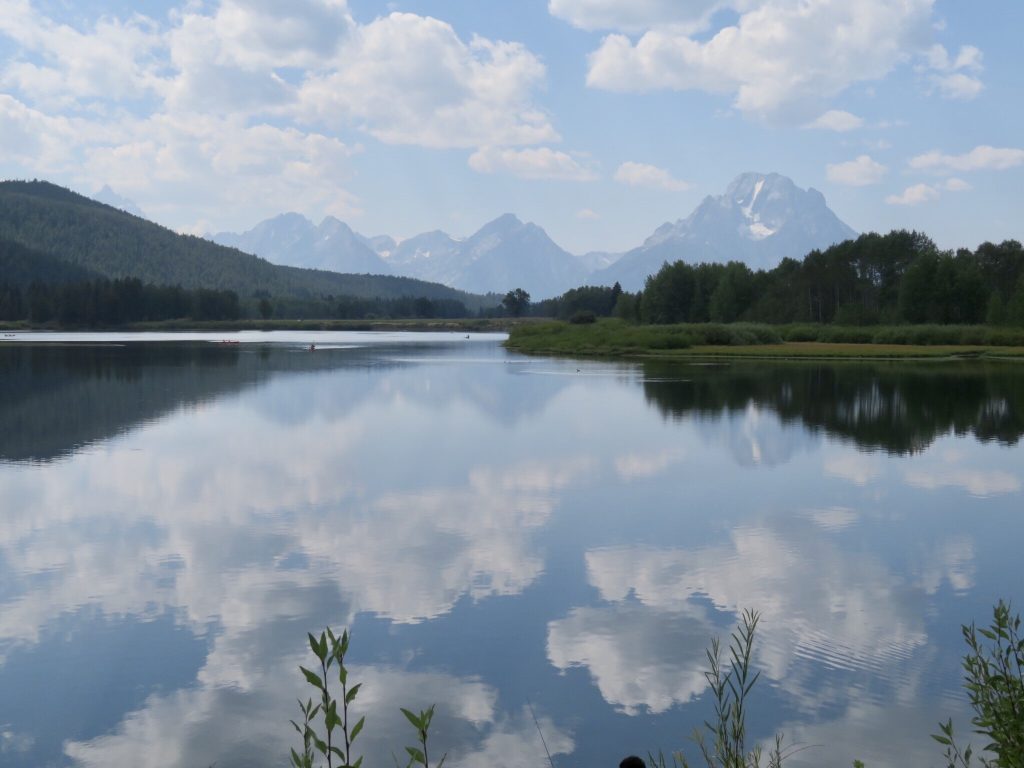
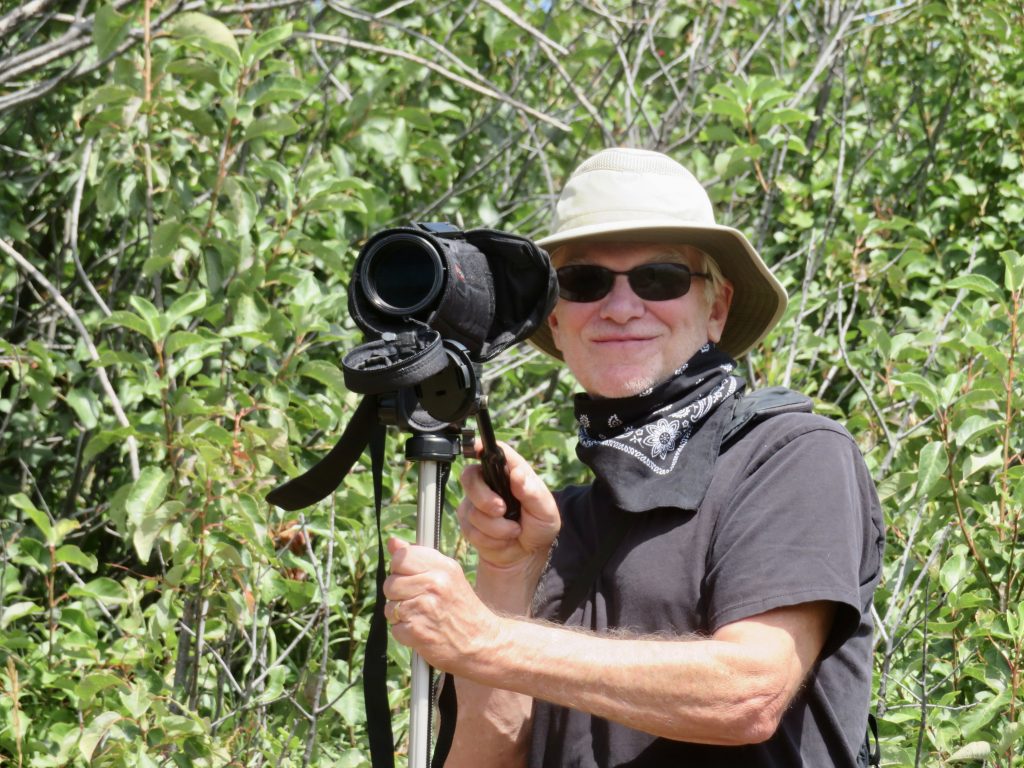
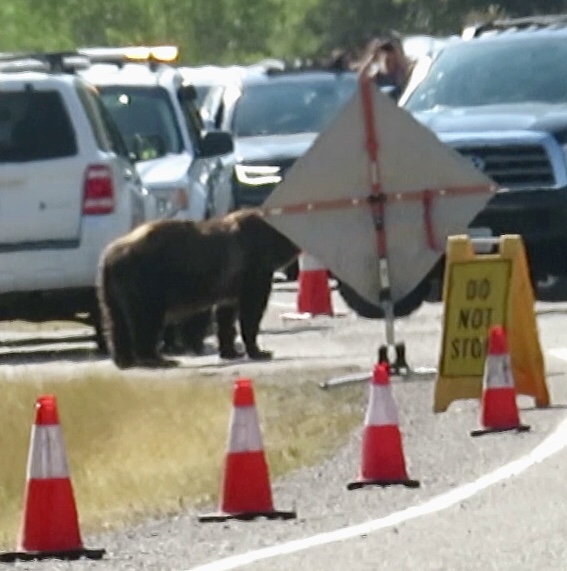
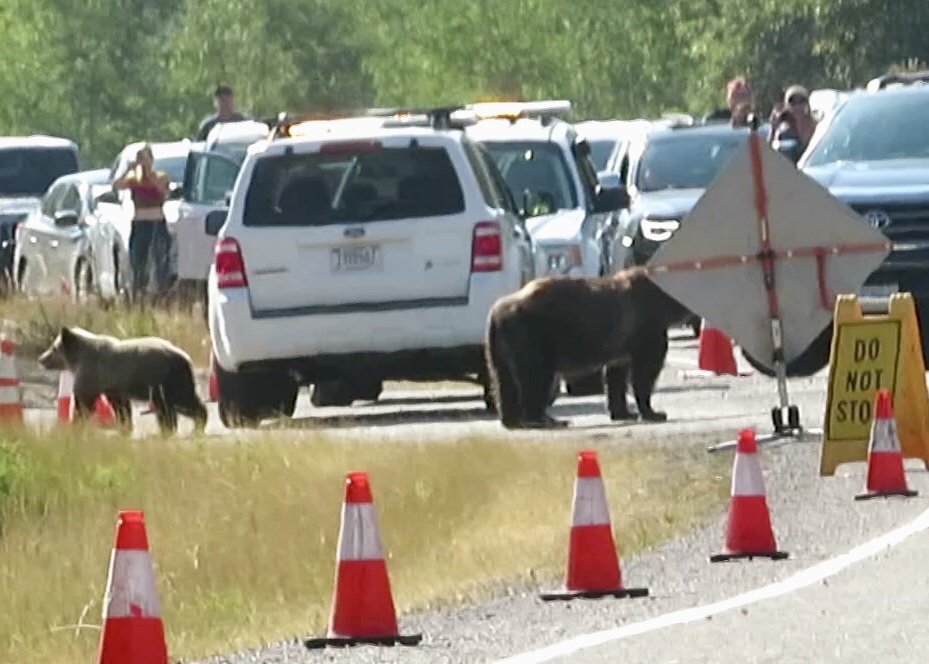
Our animal sightings complete, we headed south to spend a few days in the Park City (Utah) area before returning home. What a blessing to be able to take our motorhome to these beautiful places in the midst of the pandemic. It is something we don’t take for granted.
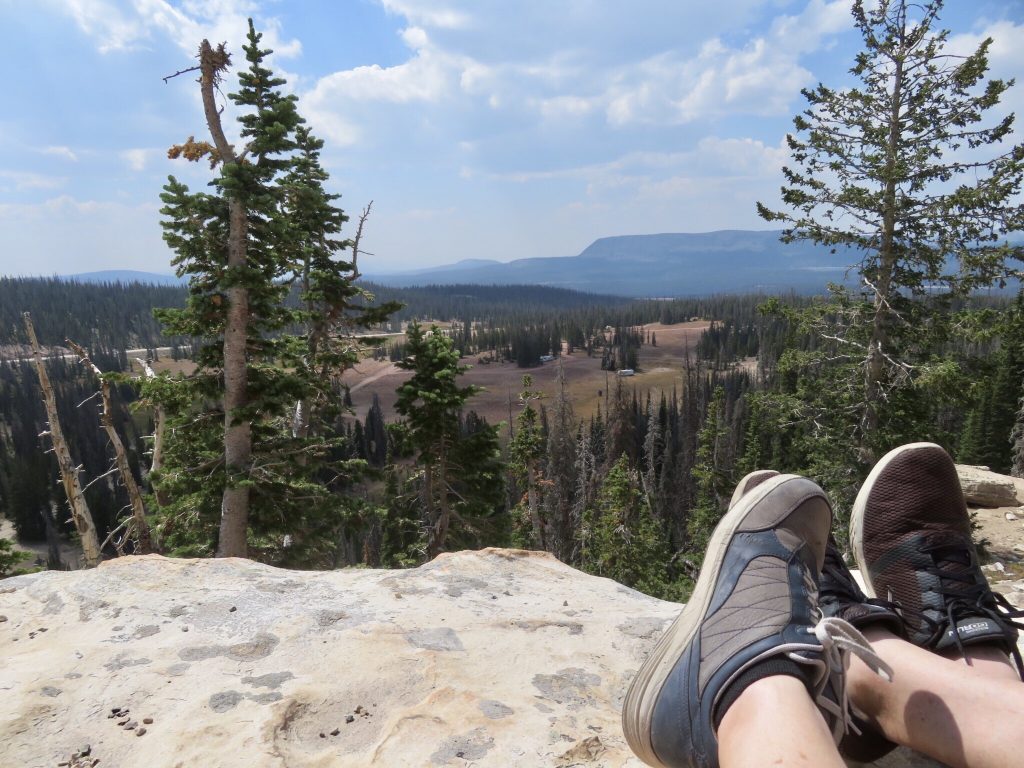
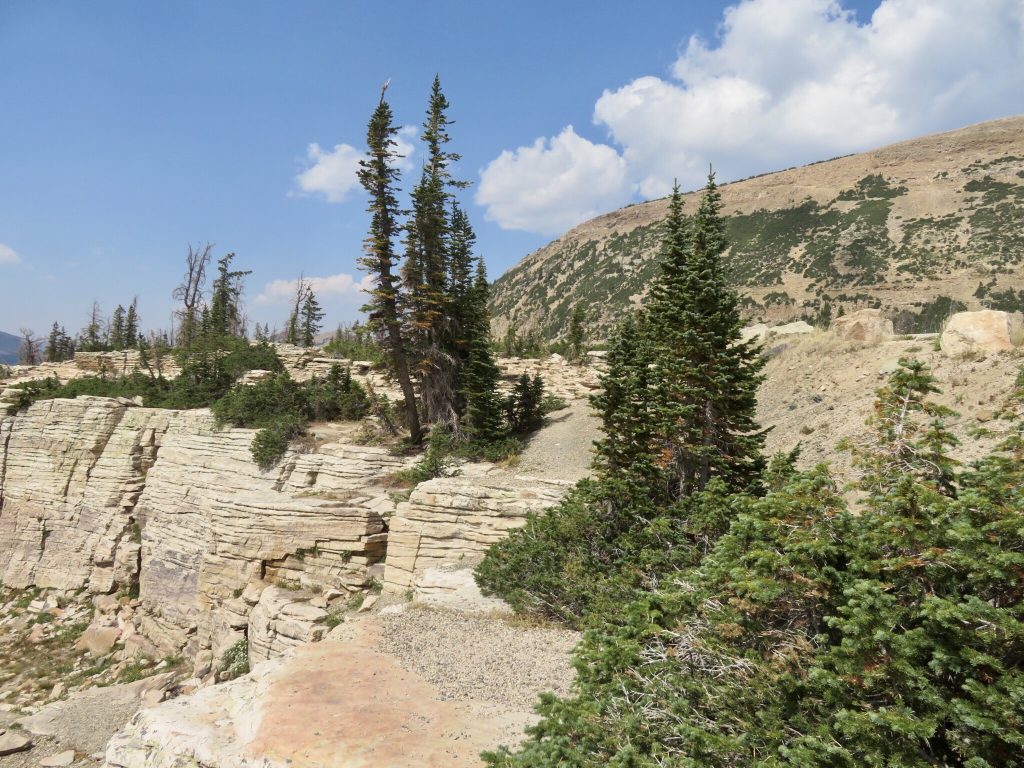


What a wonderful tip. Love seeing these photos.
Thanks for writing and viewing our blog, Lynn! It’s fun to share with others. Hope you’re staying well!
Thank you for sharing, Cindy. I hope to visit these places as I have never been there. Glad you had a beautiful time. Hugs
Thanks for reading the blog, Ania! Yes, you should definitely visit Grand Teton and Yellowstone some day. You would love them both–the hiking is amazing! Hugs back–someday we’ll be able to hug in person again.
Great job as usual catching those Wonderful moments on your travels.
What a blessing to be able to get out and away during this pandemic.
Stay well and safe.
Love, Adrienne
Thanks for writing, Adrienne! Yes, we agree that it’s a blessing to be able to safely get out and away during the pandemic. We know that not everyone can safely do that, and we tried hard not to take that opportunity for granted. Hoping you are well!
Cindy
At last, a moment to look at your Teton and Yellowstone photos. They are extraordinary. I loved seeing the beautiful mountains, lakes and geysers and the amazing wildlife! Can’t wait to visit.
Thanks for taking a look. Yes, you definitely have to go. You will love it!